
September 2023
GGGI Technical Report No. 29
ELECTRIC VEHICLE
RETROFITTING:
A GUIDE TO
POLICY-MAKING

Part of GGGI’s technical report series
1. Market Assessment of Fuel Pellets and Green Charcoal for Energy Uses in Senegal, Dereje Senshaw, 2017.
2. Policy Recommendations on Energy for Productive Uses in Rural Areas of Senegal, Dereje Senshaw, 2017.
3. GGPA Synthesis Report, Jan Stelter, 2018.
4. Meeting Global Housing Needs with Low-Carbon Materials, Christina Cheong and Donovan Storey, 2019.
5. Green Growth Index Concept, Methodology and Applications, Lilibeth Acosta et al., 2019.
6. GGPA Methodology Report, Jan Stelter, 2019.
7. G20 Background Paper: Green Growth to Achieve the Paris Agreement, Frank Rijsberman, Orestes Anastasia, Pranab Baruah, Stelios
Grafakos, James Kang, and Dereje Senshaw, 2019.
8. Assessment of Feedback from Regional Expert Consultations on The Green Growth Index (Phase 2), Lilibeth Acosta et al., 2019.
9. Review of GGGI’s Experience to Design and Operationalize National Financing Vehicles to Finance Climate and Green Growth Policy
Implementation, Fenella Aouane and Frank Rijsberman, 2019.
10. Assessment of Complementarities between GGGl’s Green Growth Index and UNEP’s Green Economy Progress Index, Lilibeth Acosta et
al., 2019.
11. Green Growth in Action: Achieving Green Energy Transformation, Dereje Senshaw, Muharrem Askin, and Bolormaa Chimednamjil,
2020.
12. Employment Assessment of Renewable Energy: Power Sector Pathways Compatible with NDCs and National Energy Plans, Stelios
Grafakos, Dereje Senshaw, and Diana Alejandra Quezada Avila, 2020.
13. Achieving Green Growth and Climate Action Post-COVID-19, Frank Rijsberman, Lilibeth Acosta, Nishant Bhardwaj, Chris Dickinson,
Mark Gibson, Stelios Grafakos, lngvild Solvang, and Donovan Storey, 2020.
14. Green Growth in Action: Attaining Green Cities, Donovan Storey and Aarsi Sagar et al., 2020.
15. The Promise of Green Growth: A Pathway to Prosperity while Achieving National and Global Ambitions, Orestes Anastasia and Stelios
Grafakos et al., 2020.
16. Green Growth Index 2020 – Measuring performance in achieving SDG targets, Lilibeth Acosta et al., 2020.
17. Green Growth Simulation Tool Phase 1 – Concept, Methods and Applications, Lilibeth Acosta et al., 2020.
18. Post-COVID-19 Green Recovery Report Summary: Recommendations to Green Mexico’s Recovery at the Subnational Level, Jose L.
Amaya, Pablo Martinez, Diana A. Quezada, and Laura Valdez, GGGI Mexico, 2021.
19. Green Recovery and Climate Action: Assessing Green Jobs from Renewable Energy and Forestry Investments for Developing and
Emerging Economies, Stelios Grafakos, Hanna Kim, Svenja Krispien, Diana Quezada, and Frank Rijsberman, 2021.
20. Closing the Climate Financing Gap: Stocktaking of GGGI Green Investment Projects 2015–20, Lasse Ringius and DaYeon Choi, 2021.
21. Accelerating Implementation of GGGI Members’ Nationally Determined Contributions: A Review of GGGI Members’ NDCs for
E-Mobility, Chang Sun Jang, Eileen Hur, Ji Hi Yun, and Kyung Nam Shin, 2021.
22. Green Growth Index 2021: Measuring Performance in Achieving SDG Targets, Lilibeth Acosta and Simon Zabrocki et. al., December
2021.
23. Green and Blue Growth Synergy – Concept for the OECS Green-Blue Growth Index, Lilibeth Acosta and Kristin Deason et al., December
2021.
24. Unlocking the Potential for Large-scale Waste Treatment Plants with a Focus on Energy Recovery and Modular Project Design: Lessons
learned from Cambodia, Lao PDR, and Vietnam, Shomi Kim and Jerome Fakhry et al., 2022.
25. Developing carbon markets based on Article 6 of the Paris Agreement: Challenges and Opportunities, Fenella Aouane, Marshall Brown,
Frank Rijsberman, 2022.
26. A Review of GGGI Members’ E-Mobility Policy Measures, Chang Sun Jang, Eileen Hur, and Isabela Costa Bandeira Coelho, 2022.
27. Green Growth Index 2022: Measuring Performance in Achieving SDG Targets, Lilibeth Acosta, Innocent Nzimenyera, et al., December
2022.
28. Closer to 1.5°C: Driving Ambitions to Deliver on the Paris Agreement: Lessons and Recommendations from GGGI’s Provision of Support
to Member and Partner Countries in 2020-2021 for NDC Enhancement, Ingvild Solvang, Siddhartha Nauduri, et al., May 2023
29. Electric Vehicle Retrotting: A Guide to Policy-Making, Chang Sun Jang, Isabela Costa Bandeira Coelho, and Chaewon An, September
2023

Copyright © 2023
Global Green Growth Institute
Jeongdong Building 19F
21-15 Jeongdong-gil
Jung-gu, Seoul 04518
Republic of Korea
The Global Green Growth Institute does not make any warranty, either express or implied, or assume any legal liability or
responsibility for the accuracy, completeness, or any third party’s use or the results of such use of any information, apparatus,
product, or process disclosed of the information contained herein or represents that its use would not infringe privately
owned rights. The views and opinions of the authors expressed herein do not necessarily state or reect those of the Global
Green Growth Institute.
ACKNOWLEDGEMENTS
Authors
Chang Sun Jang (Lead in Transport and Sustainable Mobility, GGGI), Isabela Costa Bandeira Coelho (Consultant, GGGI), and Chaewon An
(Intern, GGGI)
Reviewers
Dr. Frank Rijsberman (Director General, GGGI), Mr. Gulshan Vashistha (Regional Technical Lead for Asia, GGGI), Dr. Chaewoon Oh
(Principal Researcher, National Institute of Green Technology), Dr. Taewook Huh (Associate Professor, Gyeongsang National University
ACRONYMS & ABBREVIATIONS
AP Air Pollutants
CAPEX Capital expenditure
CO2 Carbon dioxide
EU European Union
EV Electric vehicle
GGGI Global Green Growth Institute
GHG Greenhouse gas
GM General Motors
HDV Heavy-duty vehicle
ICE Internal combustion engine
IEA International Energy Agency
LDV Light-duty vehicle
OEM Original equipment manufacturer
OPEX Operational expenditure
R&D Research and development
RTOs Region transport ofces
TCO Total cost of ownership
UK United Kingdom
US United States
ZEV Zero-emission vehicle
ZEZ Zero Emission Zones

1
CONTENTS
Executive Summary
INTRODUCTION
1.1. CONTEXT
1.2. OBJECTIVE AND SCOPE
2
EV RETROFITTING MARKET AND
TECHNOLOGIES
2.1. EV RETROFITTING MARKET
2.2 MAJOR CONVERSION KITS FOR
RETROFITTING
2.3. RETROFITTING PROCESS
3
POLICY MEASURES
3.1. GLOBAL BARRIERS FOR EV
RETROFITTING EXPANSION
3.2 ENABLING MEASURES
3.3. EV RETROFITTING POLICIES AMONGST
GGGI MEMBERS
4
7
9
12
18
24
9
10
12
14
16
FINANCIAL ASSESSMENT
4.1. ECONOMIC BENEFITS FOR LDVs
4.2 ECONOMIC BENEFITS FOR 3Ws
4.3 ECONOMIC BENEFITS FOR 2Ws
39
REFERENCES
18
19
22
24
26
28
5
CASE STUDIES
5.1. FRANCE
5.2. UNITED STATES
5.3. INDIA
5.4. JAPAN
5.5. KENYA
5.6. SRI LANKA
6
CONCLUSION AND
RECOMMENDATIONS
6.1. CONCLUSION
6.2 RECOMMENDATIONS
30
37
37
38
30
31
32
33
33
35

Electric Vehicle Retrotting: A Guide to Policy-Making
7
Electric vehicles (EVs) have gained popularity as cleaner
and more efcient solutions for achieving decarbonization
objectives. More and more national governments have
adopted electrication targets in their mobility strategies,
while major original equipment manufacturers (OEMs) are
prioritizing investments in the sector for its effectiveness,
potential, and growing popularity of EVs among customers.
1
Despite the optimistic outlook, there are considerable
challenges to the widespread adoption of EVs, such as high
market costs, limited efciency, scrappage production, and
public acceptance.
2
Within the context of a global macro
electrication agenda, EV conversion – or EV retrotting
– is a viable alternative to address the limitations of new
EV technology, offering an innovative and adaptable green
transportation solution.
With the potential to offer a more cost-effective, fast,
and adaptable alternative to the purchase of new EVs,
EV retrotting is slowly being adopted by key countries
as a complementary process to the electrication of
transportation systems. Therefore, this report intends
to explore EV retrotting as a viable option for GGGI
Members, focusing on market, technology, economic and
policy insights that can render future development and
investment opportunities.
The basic concept of vehicular retrotting is the removal
of the hardware systems of the combustion engine,
including the motor, motor controller, battery, gearbox
with differential, and wiring harness part. The process is
then followed by the substitution with the basic parts of
an EV: a steering system, suspension subsystem, braking
system, traction motor (AC or DC), battery with battery
management system, gearbox with differential, motor
controller unit, and vehicle switching and controlling part.
3
Undoubtedly, EV retrotting has the potential to play an
important middle-ground role in the complete electrication
of transportation systems. Global economic and policy
1 IEA, Global EV Outlook, last modied 2021.
2 Robbie Watts, Aritra Ghosh, and Justin Hinshelwood, “Exploring the
potential for electric retrot regulations and an accreditation scheme in the
UK,” Electronics 10, no. 24 (2021).
3 Arun C. Giriyapur and D. M. Karthik, “Retrotting of an engine
powered vehicle into an electric vehicle,” International Conference on Smart
System and Inventive Technology (ICSSIT) (2019), https://doi.org/10.1109/
ICSSIT46314.2019.8987868.
trends for green technology, transport electrication, and
climate-friendly solutions provide an optimistic outlook
of growth and development for the market over the next
decade.
4
However, persisting challenges still need to
be addressed for the industry to advance. Regulatory,
technological, and enabling barriers must be addressed for
the ICE-to-EV conversion industry to develop beyond its
current infancy stage into an adaptable and reliable low-
carbon strategy for governments worldwide.
The resolution of challenges is essential to facilitate wider
adoption of technology. Public policies, incentives, and
regulatory systems play a major role in the expansion of
the EV retrot market.
5
This report explores key enabling
measures for the EV retrotting industry and market’s
further development. It analyzes past experiences with
similar technologies as well as countries’ best practices to
ofcially support EV conversion, focusing on safety and
technical regulations, market incentives, R&D programs,
and other measures for normalization and expansion of the
practice.
Despite these barriers, several countries present a scenario
with exemplary policy practices that acknowledge EV
retrotting as a feasible and worthwhile investment. The
countries analyzed in this report show comprehensive
examples of public policies that are specic to EV
retrotting, allowing the industry to develop and continue to
grow. Among 46 GGGI members considered, ve countries
– Australia, Indonesia, Nepal, Sri Lanka, and the UK – were
identied with having EV conversion legislation. When
applying the division of Technical Regulation, Incentive
Measures, and Environment Enabling Measures, only
Indonesia possesses the three sets of regulations.
This report conducts comparative economic analysis of
two-wheelers (2Ws), three-wheelers (3Ws), and four-
wheelers (4Ws) retrotting with the case of Indonesia,
Sri Lanka, and Kenya respectively. This analysis is to fairly
reect the economic benets of retrotted electric vehicles.
Capital expenditure (CAPEX) includes vehicle investment
costs and partial replacement investment costs such as
batteries. Operational expenditure (OPEX) mainly includes
maintenance and energy costs including diesel for ICE
vehicles and electricity for electric ones.
In this analysis, total cost of ownership (TCO) and unit travel
cost (USD/km) indicators are used to determine the eco-
nomic benets. The following table shows the expected eco-
nomic benets of three types of retrotted electric vehicles
including 2Ws, 3Ws, and 4Ws.
4 Precedence Research, “Automotive retrot electric vehicle.”
5 Kukar, “Retrotting for electric vehicles.”
Executive
Summary

Electric Vehicle Retrotting: A Guide to Policy-Making
8
Table 1. The result of comparative Economic Analysis
New ICE New EV Retroed EV
4Ws
TCO
(USD)
100,736 82,913 65,217
$/km 0.427 0.302 0.249
3Ws
TCO
(USD)
27,487 16,162 15,250
$/km 0.066 0.034 0.033
2Ws
TCO
(USD)
3,134 1,700 2,436
$/km 0.026 0.013 0.018
In addition, this report conducts environmental impact
assessment of the retrotted electric vehicles. The
following table shows the expected environmental impact
of the retrotted electric eet per annum. In terms of local
pollutants, new E4W and retrotted E4W options reduce
PM
2.5
and NO
x
emissions by 100%.
Table 2. Environmental Impacts of Retrotted EV
New ICE New EV Retroed EV
4Ws
CO
2
(kgCO2e)
3,777.91 1,844.23 1,844.23
PM
2.5
(g)
1,991.206 0.000 0.000
NO
x
(kg)
348.068 0.000 0.000
3Ws
CO
2
(kgCO2e)
7,051.80 2,750.20 2,750.20
PM
2.5
(g)
785.744 0.000 0.000
NO
x
(kg)
116.073 0.000 0.000
2Ws
CO
2
(kgCO2e)
387.89 292.52 292.52
PM
2.5
(g)
68.326 0.000 0.000
NO
x
(kg)
10.093 0.000 0.000
The EV retrotting market can be directly beneted by
the promotion of decarbonization strategies and industry
innovations and can be further expanded by the adoption
of effective policies for the regulation and promotion of
the practice. Given its potential as a more cost-effective,
fast, and adaptable alternative to purchasing new EVs,
retrotting is slowly being adopted by countries as
a complementary process to the electrication of
transportation systems. Given this circumstance, this
report proposes the following recommendations:
RECOMMENDATION 1: Establishment of EV conversion–
specic technical legislation
With the increasing availability of EV retrotting kits to
the public, countries must prioritize specic legislation
to regulate and oversee the EV retrotting process. The
adoption of an updated and robust regulation scheme helps
guarantee the reliability of the process to the customer,
constituting an important rst step for the expansion of the
market.
RECOMMENDATION 2: Inclusion of EV retrots in
existing EV incentives
As countries continue to invest in different decarbonization
strategies for their transportation systems, electrication
is a popular alternative for many. While it may be argued
that EV retrots can be automatically classied as EVs and,
consequently, be given the same incentives granted to new
EVs, an explicit inclusion of converted vehicles is essential
for a truthful adoption of retrotting as an electrication
strategy.
RECOMMENDATION 3: Investment in R&D, capacity-
building, and awareness campaigns
It is recommended to invest in manufacturers, start-ups,
and companies through national R&D programs to continue
to develop new EV conversion kits as well as for capacity
building for the technicians who perform the conversion.
Additionally, awareness campaigns are necessary to
familiarize customers with the technology.
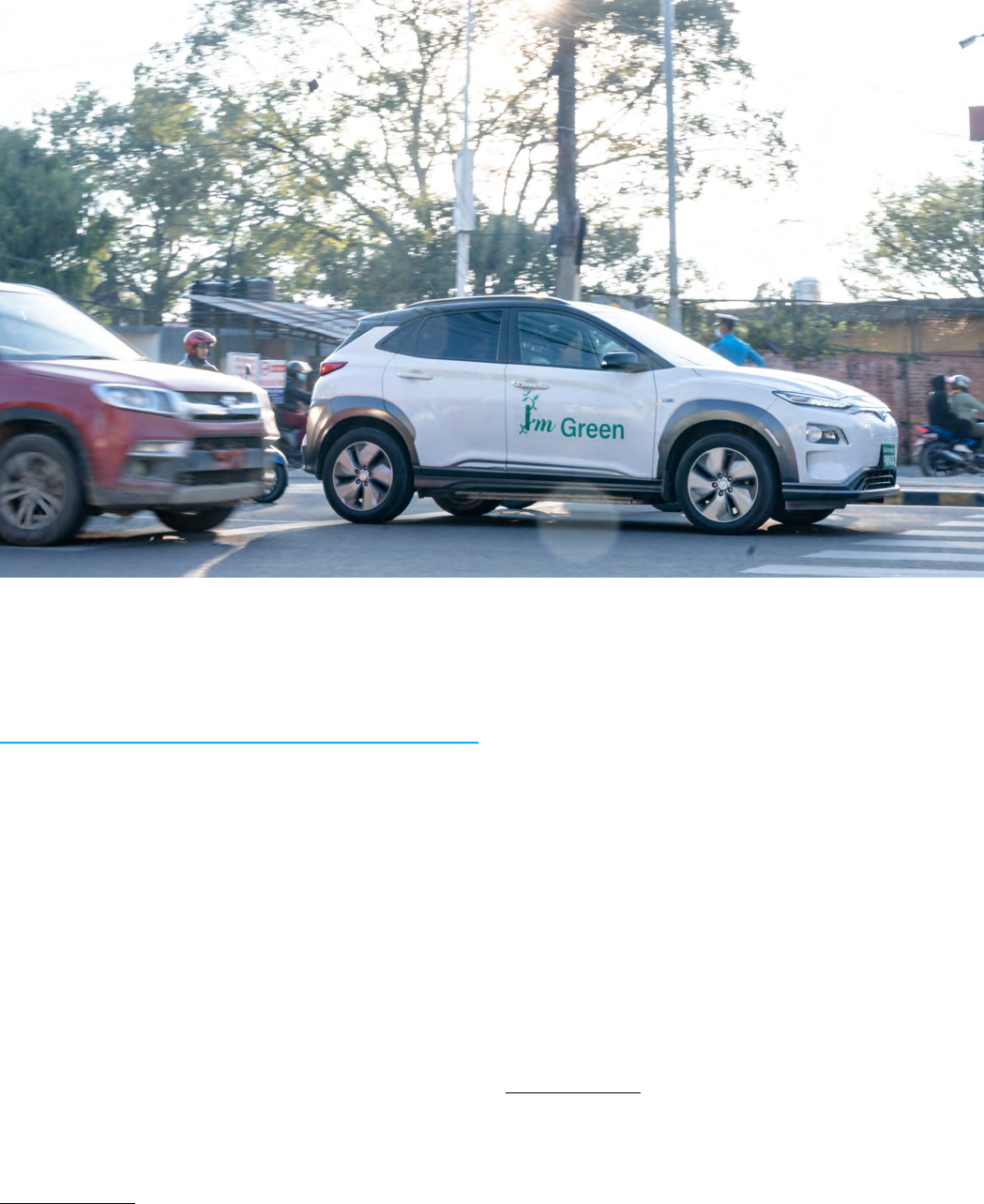
Electric Vehicle Retrotting: A Guide to Policy-Making
9
1
Growing concerns about rising global temperatures and
the effects of climate change have led countries to develop
strategies for the reduction of GHG emissions in different
sectors.
6
The transportation sector, historically primarily
reliant on fossil fuels
7
and responsible for considerably
over a quarter of CO
2
emissions globally,
8
has been heavily
affected by these trends. Major industry players have been
prompted to embrace carbon-light solutions and formulate
long-term strategies for decarbonization.
Electric vehicles (EVs) have gained popularity as cleaner and
more efcient solutions to help achieve decarbonization
objectives. Numerous national governments have adopted
electrication targets for their mobility strategies, while
major original equipment manufacturers (OEMs) have
prioritized investments in the sector for its effectiveness,
6 UNFCCC, Key aspects of the Paris Agreement, accessed October 2,
2022, https://unfccc.int/most-requested/key-aspects-of-the-paris-ag
reement?gclid=CjwKCAjwrdmhBhBBEiwA4Hx5g4N4YHKwi1RaH_
XUmZtdG7QdhuL8PgKRgc4Zzq0wtdtMJifxNxxjQxoCsIQQAvD_BwE.
7 IEA, Transport, last modied 2023.
8 IEA, Transport, last modied 2022.
1. INTRODUCTION
1.1. CONTEXT
potential, and growing popularity of EVs among customers.
9
Despite the optimistic outlook, there are considerable
challenges to the widespread adoption of EVs, such as high
market costs, limited efciency, scrappage production, and
public acceptance.
10
In the broader context of a global macro
electrication agenda, EV conversion or retrotting is a
viable alternative to the limitations of new EV technology,
offering a fresh perspective to overcome the existing
limitations and challenges.
New EVs are still considered luxury vehicles in many
markets worldwide. Given the stage of the technology and
of manufacturers, purchasing a new EV model is often not a
nancially viable option for many customers
11
. Furthermore,
many customers face the high purchase costs for new EV
models while still encountering the challenges of owning
internal combustion engines (ICEs), such as restrictions
on CO
2
emissions and rising oil prices.
12
In this context, EV
9 IEA, Global EV Outlook, last modied 2021.
10 Robbie Watts, Aritra Ghosh, and Justin Hinshelwood, “Exploring the
potential for electric retrot regulations and an accreditation scheme in the
UK,” Electronics 10, no. 24 (2021).
11 Watts, Ghosh, and Hinshelwood, “Exploring the potential for electric
retrot regulations.”
12 Gupta Kukar, “Retrotting for electric vehicles: Status, potentials,
and challenges,” The City Fix Learn, last modied July 29, 2019, https://
thecityxlearn.org/webinar/retrotting-electric-vehicles-status-potential-
and-challenges.

Electric Vehicle Retrotting: A Guide to Policy-Making
10
retrotting could be a possible alternative for democratizing
access to electrication. It serves not only as a cost-efcient
option for customers but also offers opportunities for
engagement with EV parts industries and the expansion of
EV infrastructure’s outreach.
13
While OEMs are adapting their productive systems to
incorporate the different needs of EV consumers, the
current market is dominated by popular vehicles from high-
income countries and is unable to meet diverse demands
of distinct geographical regions and niche clientele.
14
The adoption of more widespread EV conversion would
allow (i) for owners of vehicles with a high inherent
value to transition their ICEs into a technology t for
decarbonization, (ii) for owners of niche vehicles to
participate in electrication despite the lack of alternatives
for new EV models, and (iii) for governments and
manufacturers to spread awareness and information about
EVs and accelerate long-term electrication.
15
EV retrotting has the potential to be an environmentally
friendly alternative to the purchase of new EV models.
EV conversion not only reduces scrappage by reducing
the number of potentially discarded vehicles in the
transformation process, but also shows promise in
diminishing GHG emissions. Recent studies show that
retrotted EVs exhibit reduced life cycle GHG emissions
compared to both ICE vehicles and even new EV models.
16
While the technology is still new and its market is still
advancing, EV retrotting can tackle the challenges that
new EV models face and has the potential to successfully
integrate strategies for decarbonization. Consequently, the
electric retrotting of vehicles can play an important role in
facilitating the electrication of transport and achieving the
long-term goal of sustainable decarbonization.
Global economic and policy trends for green technology,
transport electrication, and climate-friendly solutions
provide an optimistic outlook of growth and development
for the EV retrotting market over the next decade.
17
However, persisting challenges still need to be addressed for
the industry to advance. A lack of visibility and knowledge
of retrotting solutions among possible customers and
13 Fabian Hoeft, “Internal combustion engine to electric vehicle
retrotting: Potential customer’s needs, public perception and business
model implications,” Transportation Research Interdisciplinary Perspectives 9
(2021), https://doi.org/10.1016/j.trip.2021.100330.
14 Watts, Ghosh, and Hinshelwood, “Exploring the potential for electric
retrot regulations.”
15 Hoeft, “Internal combustion engine to electric vehicle retrotting”;
Watts, Ghosh, and Hinshelwood, “Exploring the potential for electric
retrot regulations.”
16 Eckard Helmers, Johannes Dietz, and Susanne Hartard, “Electric
car life cycle assessment based on real-world mileage and the electric
conversion scenario,” The International Journal of Life Cycle Assessment
(2017): 22, https://doi.org/10.1007/s11367-015-0934-3.
17 Precedence Research, “Automotive retrot electric vehicle.”
policymakers alike, for instance, hinders the inclusion of such
solutions in transport electrication strategies.
18
Without
governmental support, the industry’s capacity for developing
better and cheaper technology is inhibited, restricting the
existing EV conversion kits to a narrow number of vehicle
models with limitations in terms of range and longevity.
19
EV retrotting has the potential to play an important middle-
ground role in the complete electrication of transportation
systems. As a solution to challenges such as the total cost
of EV adoption and high scrappage levels of old ICE models,
the expansion of EV retrotting should be considered
by governments within their long-term electrication
strategies. Despite the EV conversion industry being in its
initial stages, it can be a strong alternative for countries
that cannot afford bold electrication initiatives due to high
upfront costs. Retrotting can be used to facilitate policy
transitions for transport electrication, given its adaptability
to regulations and incentives for EV adoption and can
thus promote further visibility of electric transportation
alternatives.
20
Additionally, it may provide environmental
benets through promoting reutilization of older vehicle
parts and reducing the scrappage associated with the
expansion of new EVs.
21
1.2. OBJECTIVE AND SCOPE
With the potential of being a more cost-effective, fast,
and adaptable alternative to the purchase of new EVs,
EV retrotting is slowly being adopted by key countries
as a complementary process to the electrication of
transportation systems. Therefore, this report intends
to explore EV retrotting as a viable option for GGGI
Members, focusing on market, technology, economic and
policy insights that can render future development and
investment opportunities.
The report will be used to support the GGGI team and
Members to facilitate the adoption of EV retrotting. The
report includes six chapters:
• Chapter 1 presents a general contextualization of
EV retrotting and the introduction of the report.
18 Hoeft, “Internal combustion engine to electric vehicle retrotting.”
19 Neil Winton, “Electric cars are too expensive for many, but retrotting
could be the answer,” Forbes, last modied January 20, 2022, https://www.
forbes.com/sites/neilwinton/2022/01/20/electric-cars-are-too-expensive-
for-many-but-retrotting-could-be-the-answer/?sh=319bbc397583.
20 Hoeft, “Internal combustion engine to electric vehicle retrotting”;
Watts, Ghosh, and Hinshelwood, “Exploring the potential for electric
retrot regulations.”
21 Hoeft, “Internal combustion engine to electric vehicle retrotting”;
Watts, Ghosh, and Hinshelwood, “Exploring the potential for electric
retrot regulations.”
Electric Vehicle Retrotting: A Guide to Policy-Making
11
• Chapter 2 introduces a brief market analysis of
EV retrotting and presents an explanation of the
composition and procedure of EV retrotting of
different modes of vehicles.
• Chapter 3 presents policy incentives and strategies
to promote safe and inclusive EV retrotting
amongst public and private stakeholders.
• Chapter 4 showcases a nancial assessment of
ICE vehicles, new electric vehicles, and retrotted
electric vehicles of three different vehicle types
in three different case countries to explore the
possible economic and environmental benets.
• Chapter 5 explores case studies that highlight
countries’ policy experiences with EV conversion
and the lessons learned from previous chapters.
• Chapter 6 summarizes the information provided
throughout the report.
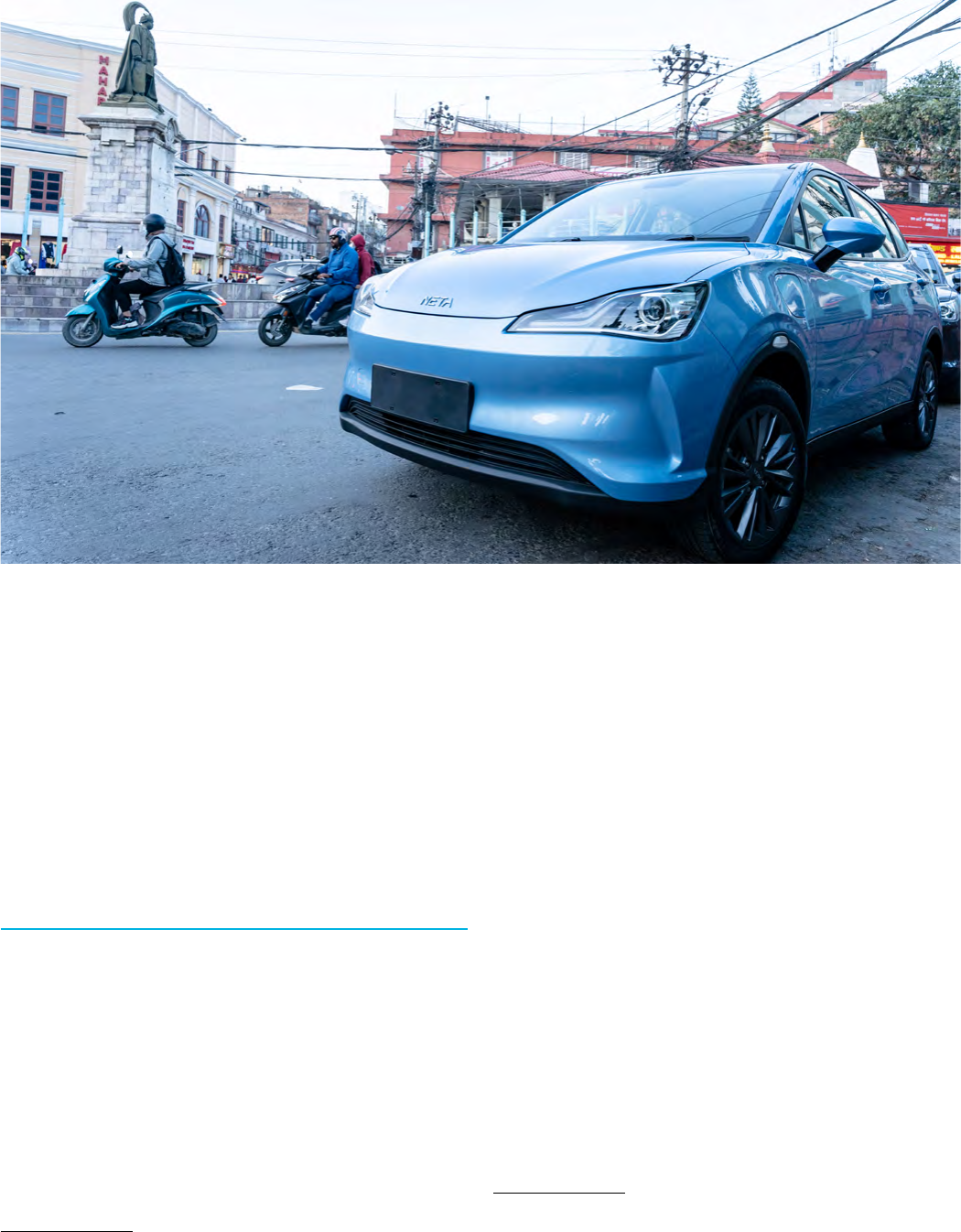
Electric Vehicle Retrotting: A Guide to Policy-Making
12
2
2. EV
RETROFITTING
MARKET AND
TECHNOLOGIES
2.1. EV RETROFITTING MARKET
The EV retrotting market has the potential for a vast
uptake among consumers, not only for its cost-effectiveness
but also for its technology. EV retrotting kits are simple
in composition, and the conversion process is relatively
straightforward for specialized technicians. While market
analyses indicate that the EV retrotting market is in its
initial stages, the simplicity and accessible technology are
a clear advantage for its expansion. However, caution is
advised in inspections and supervision to guarantee a safe
and optimal adoption of EV retrotting.
22
As will be explored
22 Nirmal Kumar, Navaneeth M, and Allan Sabu Joseph, “Retrotting of
conventional two-wheelers to electric two-wheelers,” 13th IEEE PES Asia
Pacic Power & Energy Engineering Conference (PPEEC) (2021), https://doi.
org/10.1109/APPEEC50844.2021.9687799.
in following chapters, proper EV retrotting regulations can
allow for market growth and for EV technology to be further
naturalized in society.
While the global EV retrotting market currently
presents a limited number of regularized retrotting kits,
popularization of the practice creates an avenue for the
exploration of the technology in more specialized vehicles
and in conjunction with other electrication technologies.
23
Current auto manufacturers already produce most of the
parts composing retrotting kits, making entry into the EV
conversion business relatively cost-effective and resource-
efcient. Major OEMs have an opportunity to expand
into the electrication market without compromising a
signicant portion of their production capacity.
The growing consumer demand for vehicle electrication
and stricter government regulations on vehicle emissions
present key opportunities for the expansion of the electric
conversion market, with demand predicted to grow for
passenger vehicles and two-wheelers in the next decade.
The global retrot vehicle market was valued at an estimate
USD 65.94 billion in 2023 and is projected to reach USD
125.37 billion by 2032
24
. The market presents signs of
continuous growth, being dominated by the commercial
vehicle segment (48%) and by market shares from Asia-
23 Hoeft, “Internal combustion engine to electric vehicle retrotting.”
24 Precedence Research, “Automotive retrot electric vehicle powertrain
market size, share, report by 2032,” last modied June 2023, https://www.
precedenceresearch.com/press-release/automotive-retrot-electric-
vehicle-powertrain-market
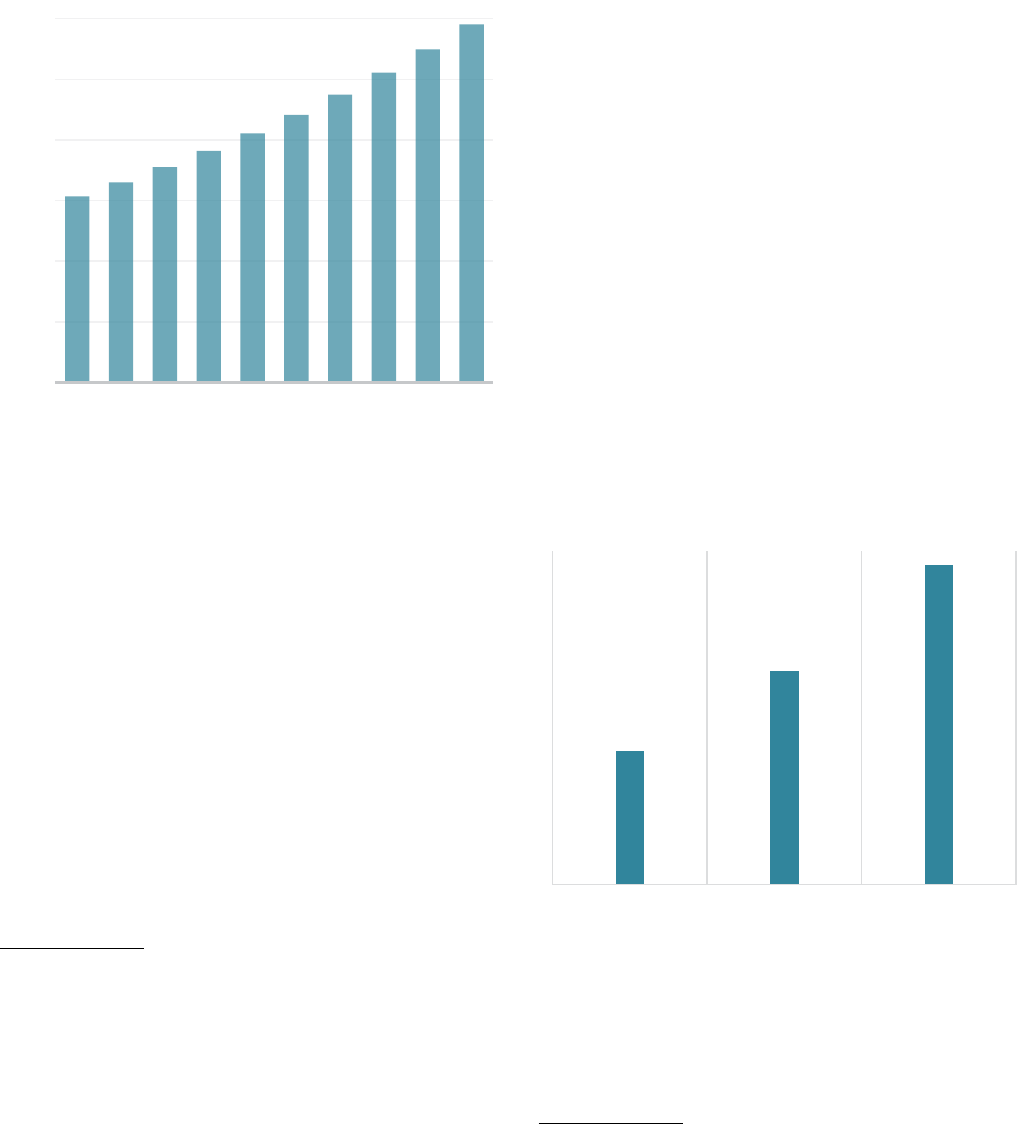
Electric Vehicle Retrotting: A Guide to Policy-Making
13
Pacic (62.5%), Europe (17.3%), North America (10.7%),
Latin America (4%), and the Middle East and Africa (2.1%).
25
Figure 1: Automotive retrot electric vehicle powertrain mar-
ket size, 2021 to 2030 (USD billion), Precedence Research, 2021
6 | Page
2. EV RETROFITTING
MARKET AND
TECHNOLOGIES
2.1. EV RETROFITTING MARKET
The EV retrofitting market has the potential for a vast
uptake among consumers, not only for its cost-
effectiveness but also for its technology. EV retrofitting
kits are simple in composition, and the conversion
process is relatively straightforward for specialized
technicians. While market analyses indicate that the EV
retrofitting market is in its initial stages, the simplicity
and accessible technology are a clear advantage for its
expansion. However, caution is advised in inspections
and supervision to guarantee a safe and optimal adoption
of EV retrofitting.
22
As will be explored in following
chapters, proper EV retrofitting regulations can allow for
market growth and for EV technology to be further
naturalized in society.
While the global EV retrofitting market currently
presents a limited number of regularized retrofitting kits,
popularization of the practice creates an avenue for the
exploration of the technology in more specialized
vehicles and in conjunction with other electrification
technologies.
23
Current auto manufacturers already
produce most of the parts composing retrofitting kits,
making entry into the EV conversion business relatively
cost-effective and resource-efficient. Major OEMs have
an opportunity to expand into the electrification market
without compromising a significant portion of their
production capacity.
The growing consumer demand for vehicle
electrification and stricter government regulations on
vehicle emissions present key opportunities for the
22
Nirmal Kumar, Navaneeth M, and Allan Sabu Joseph, “Retrofitting of
conventional two-wheelers to electric two-wheelers,” 13th IEEE PES
Asia Pacific Power & Energy Engineering Conference (PPEEC) (2021),
https://doi.org/10.1109/APPEEC50844.2021.9687799.
23
Hoeft, “Internal combustion engine to electric vehicle retrofitting.”
24
Precedence Research, “Automotive retrofit electric vehicle
powertrain market size, share, report by 2032,” last modified June
2023, https://www.precedenceresearch.com/press-
release/automotive-retrofit-electric-vehicle-powertrain-market
25
Precedence Research, “Automotive retrofit electric vehicle
powertrain market,” last modified September 2022,
expansion of the electric conversion market, with
demand predicted to grow for passenger vehicles and
two-wheelers in the next decade. The global retrofit
vehicle market was valued at an estimate USD 65.94
billion in 2023 and is projected to reach USD 125.37
billion by 2032
24
. The market presents signs of
continuous growth, being dominated by the commercial
vehicle segment (48%) and by market shares from Asia-
Pacific (62.5%), Europe (17.3%), North America (10.7%),
Latin America (4%), and the Middle East and Africa
(2.1%).
25
Figure 1: Automotive retrofit electric vehicle powertrain market size,
2021 to 2030 (USD billion), Precedence Research, 2021
EV retrofitting can be an asset for the decarbonization of
transportation systems—for users of professional-specific
vehicles (e.g., ambulances or commercial mobiles) who
wish to transition to EVs but cannot find available
electric models of their vehicles.
26
Similarly, the
technology appeals to collectors of classic models or
other niche markets, facing restrictions on ICE vehicle
use within zero-emission zones (ZEZ).
27
The conversion
of specific models can guarantee optimal customer
https://www.precedenceresearch.com/automotive-retrofit-electric-
vehicle-powertrain-market, Precedence Research, “Automotive retrofit
electric vehicle powertrain market size, share, report by 2032,” last
modified June 2023, https://www.precedenceresearch.com/press-
release/automotive-retrofit-electric-vehicle-powertrain-market
26
Watts, Ghosh, and Hinshelwood, “Exploring the potential for electric
retrofit regulations.”
27
Watts, Ghosh, and Hinshelwood, “Exploring the potential for electric
retrofit regulations.”
0
20
40
60
80
100
120
2021 2022 2023 2024 2025 2026 2027 2028 2029 2030
EV retrotting can be an asset for the decarbonization of
transportation systems—for users of professional-specic
vehicles (e.g., ambulances or commercial mobiles) who
wish to transition to EVs but cannot nd available electric
models of their vehicles.
26
Similarly, the technology appeals
to collectors of classic models or other niche markets, facing
restrictions on ICE vehicle use within zero-emission zones
(ZEZ).
27
The conversion of specic models can guarantee
optimal customer approval and present better performance
compared to new EV models of the same category, with
certain retrot models having over 100 kilometers more
autonomy than their new EV counterparts.
28
The global EV conversion market denes different
retrotting demands according to the region. Asia-Pacic
presents the largest share of the global EV powertrain
conversion market, led by countries with strong investments
in clean transportation research and development
25 Precedence Research, “Automotive retrot electric vehicle powertrain
market,” last modied September 2022, https://www.precedenceresearch.
com/automotive-retrot-electric-vehicle-powertrain-market, Precedence
Research, “Automotive retrot electric vehicle powertrain market
size, share, report by 2032,” last modied June 2023, https://www.
precedenceresearch.com/press-release/automotive-retrot-electric-
vehicle-powertrain-market
26 Watts, Ghosh, and Hinshelwood, “Exploring the potential for electric
retrot regulations.”
27 Watts, Ghosh, and Hinshelwood, “Exploring the potential for electric
retrot regulations.”
28 Luthereau, Alexandra, “Le retrot électrique: L’avenir de la voiture
propre?” Numerama, last modied June 28, 2020, https://www.numerama.
com/tech/628645-le-retrot-electrique-lavenir-de-la-voiture-propre.html.
(R&D), such as China, India, Japan, and South Korea.
29
Increasing demand for EV retrotting in the region is led
by governments’ determination to spur electromobility
adoption, elevated prices of new EV models, and
investments in R&D both in the public and private sectors.
Retrotting is presented as a cost-effective alternative,
utilizing technology and expertise developed in conjunction
with EV R&D. The exploration of EV retrotting as a related
market creates opportunities for the development of
universal conversion kits of different small car models as
well as other popular modes of transportation, such as two-
and three-wheelers.
30
Increased demand from European and North American
economies is also affecting the development of new
technologies in the EV retrotting market. With new
EV models being more nancially accessible in these
countries—through high investments in R&D and nancial
and scal incentives for the purchase and ownership of
EVs—retrotting targets the conversion of classic or labor-
specic vehicles rather than most of the transportation eet
in these regions. In these cases, the development of new
business models and vehicle model–specic conversion kits
can contribute to the retrotting market expansion.
31
Figure 2: Automotive retrot electric vehicle powertrain mar-
ket share, by vehicle type, 2021 (%), Precedence Research, 2021
7 | Page
approval and present better performance compared to
new EV models of the same category, with certain
retrofit models having over 100 kilometers more
autonomy than their new EV counterparts.
28
The global EV conversion market defines different
retrofitting demands according to the region. Asia-Pacific
presents the largest share of the global EV powertrain
conversion market, led by countries with strong
investments in clean transportation research and
development (R&D), such as China, India, Japan, and
South Korea.
29
Increasing demand for EV retrofitting in
the region is led by governments’ determination to spur
electromobility adoption, elevated prices of new EV
models, and investments in R&D both in the public and
private sectors. Retrofitting is presented as a cost-
effective alternative, utilizing technology and expertise
developed in conjunction with EV R&D. The exploration
of EV retrofitting as a related market creates
opportunities for the development of universal
conversion kits of different small car models as well as
other popular modes of transportation, such as two- and
three-wheelers.
30
Increased demand from European and North American
economies is also affecting the development of new
technologies in the EV retrofitting market. With new EV
models being more financially accessible in these
countries—through high investments in R&D and
financial and fiscal incentives for the purchase and
ownership of EVs—retrofitting targets the conversion of
classic or labor-specific vehicles rather than most of the
transportation fleet in these regions. In these cases, the
development of new business models and vehicle
model–specific conversion kits can contribute to the
retrofitting market expansion.
31
28
Luthereau, Alexandra, “Le retrofit électrique: L’avenir de la voiture
propre?” Numerama, last modified June 28, 2020,
https://www.numerama.com/tech/628645-le-retrofit-electrique-
lavenir-de-la-voiture-propre.html.
29
Transparency Market Research, “Automotive retrofit electric vehicle
powertrain market,” last modified June 2022,
https://www.transparencymarketresearch.com/automotive-retrofit-
electric-vehicle-powertrain-market.html.
30
Transparency Market Research, “Automotive retrofit electric vehicle.”
31
Transparency Market Research, “Automotive retrofit electric vehicle.”
32
Precedence Research, “Automotive retrofit electric vehicle.”
Figure 2: Automotive retrofit electric vehicle powertrain market share,
by vehicle type, 2021 (%), Precedence Research, 2021
By vehicle type, the market is segmented into
commercial vehicles, two-wheelers, and passenger
vehicles. In 2021, the commercial vehicle segment held
the largest electric conversion market share. A diverse
set of countries, such as China and India, have facilitated
the conversion of electric buses and heavy-duty trucks to
decrease pollution along congested delivery routes.
32
The passenger vehicle segment is also anticipated to
have the dominating market share by 2030. Market
drivers—such as increases in fuel prices, the development
of new motor and battery technologies, and the adoption
of stricter carbon emission regulations—will fuel major
investments in retrofitting passenger vehicles.
Major OEMs (e.g., GM
33
Ford,
34
and Toyota
35
) have
announced their expansion toward the EV retrofitting
market, disclosing the release of official conversion kits
for their older models.
36
Further integration of
retrofitting technology within the global automobile
manufacturing system couldboost EV infrastructure
33
Paul A. Eisenstein, “GM set to join fast-growing EV conversion
market,” The Detroit Bureau, last modified July 22, 2022,
https://www.thedetroitbureau.com/2022/07/gm-set-to-join-fast-
growing-ev-conversion-market/.
34
Chris Randall, “Ford announces electric conversion motor.” Electrive,
last modified August 27, 2021,
https://www.electrive.com/2021/08/27/ford-announces-electric-
conversion-motor/.
35
Thom Taylor, “Toyota says it plans to convert old cars into EVs,”
Motor Biscuit, last modified January 13, 2023,
https://www.motorbiscuit.com/toyota-says-plans-to-convert-old-cars-
into-evs/.
36
Eisenstein, “GM set to join fast-growing EV conversion market.”
20
32
48
TWO- WHEELERS PASSENGER
VEHICLE
COMMERCIAL
VEHICLE
By vehicle type, the market is segmented into commercial
vehicles, two-wheelers, and passenger vehicles. In 2021,
the commercial vehicle segment held the largest electric
conversion market share. A diverse set of countries, such as
29 Transparency Market Research, “Automotive retrot electric
vehicle powertrain market,” last modied June 2022, https://www.
transparencymarketresearch.com/automotive-retrot-electric-vehicle-
powertrain-market.html.
30 Transparency Market Research, “Automotive retrot electric vehicle.”
31 Transparency Market Research, “Automotive retrot electric vehicle.”

Electric Vehicle Retrotting: A Guide to Policy-Making
14
China and India, have facilitated the conversion of electric
buses and heavy-duty trucks to decrease pollution along
congested delivery routes.
32
The passenger vehicle segment
is also anticipated to have the dominating market share by
2030. Market drivers—such as increases in fuel prices, the
development of new motor and battery technologies, and
the adoption of stricter carbon emission regulations—will
fuel major investments in retrotting passenger vehicles.
Major OEMs (e.g., GM
33
Ford,
34
and Toyota
35
) have
announced their expansion toward the EV retrotting
market, disclosing the release of ofcial conversion kits
for their older models.
36
Further integration of retrotting
technology within the global automobile manufacturing
system couldboost EV infrastructure development by
making electrication cheaper and more accessible.
37
Consequently, EV retrotting can play an important role in
the automotive industry’s transition.
The electric powertrain market plays a major role in the
development of EV retrotting as a decarbonization
solution. Companies in this sector, such as Altigreen, Bharat
Mobi, Continental AG, Dephi Technologies, Hitachi Astemo,
Magna International, Mitsubishi, Robert Bosch, Transition
One, etc. play a key role in the growth of the global market
38
.
Despite the initial adoption of the strategy by some global
players, local companies currently play a strategic role in
the popularization of EV conversion kits in their areas. Local
companies and manufacturers are more adaptable to their
markets’ needs in the development of retrotting solutions,
working with spare parts to create conversion kits
39
.
A preliminary identication of ICE to EV retrotting market
was conducted on GGGI member countries. The result is as
seen in Table 3:
32 Precedence Research, “Automotive retrot electric vehicle.”
33 Paul A. Eisenstein, “GM set to join fast-growing EV conversion
market,” The Detroit Bureau, last modied July 22, 2022, https://www.
thedetroitbureau.com/2022/07/gm-set-to-join-fast-growing-ev-
conversion-market/.
34 Chris Randall, “Ford announces electric conversion motor.” Electrive,
last modied August 27, 2021, https://www.electrive.com/2021/08/27/
ford-announces-electric-conversion-motor/.
35 Thom Taylor, “Toyota says it plans to convert old cars into EVs,” Motor
Biscuit, last modied January 13, 2023, https://www.motorbiscuit.com/
toyota-says-plans-to-convert-old-cars-into-evs/.
36 Eisenstein, “GM set to join fast-growing EV conversion market.”
37 Hoeft, “Internal combustion engine to electric vehicle retrotting.”
38 Precedence Research, “Automotive retrot electric vehicle powertrain
market size, share, report by 2032,” last modied June 2023, https://www.
precedenceresearch.com/press-release/automotive-retrot-electric-
vehicle-powertrain-market
39 Hoeft, “Internal combustion engine to electric vehicle retrotting”;
Precedence Research, “Automotive retrot electric vehicle.”
Table 3: Preliminary mapping of ICE to EV retrotting market in
GGGI member countries
Region Countries with Retrotting Market
Asia Indonesia, Republic of Korea, Nepal,
Pakistan, Sri Lanka, Thailand
Africa Kenya, Rwanda
Europe Norway, UK
Latin
America and
Caribbean
Colombia, Ecuador, Mexico, OECS,
Paraguay, Peru
Middle East UAE
Pacic Australia, Philippines
Total: 19
Out of the 46 ofcial members of GGGI, 19 member
countries and organizations have been identied with EV
retrotting markets at some level. EV retrotting markets
have been identied in all regions in which GGGI is present.
A majority of these members are in the Asia region (6 out
of 19), reecting the organization of the current global
retrotting market. A similar quantity of members, however,
was identied in the Latin American and Caribbean regions
(6 out of 19). Fewer representations have been found in
Africa (2 out of 19), Europe (2 out of 19), the Pacic (2 out of
19), and the Middle East (1 out of 19).
Limitations on the preliminary identication of EV
retrotting markets amongst GGGI members must be
addressed. The mapping was conducted through desk-based
research and review from the GGGI HQ and regional ofces.
This exercise was conducted to grant a brief understanding
of the retrotting market amongst GGGI members, to
identify future opportunities and challenges for future
expansion of the service in the regions, and to guide analyses
of policy measures for market expansion. While the EV
retrotting market is still at an infancy level in a global scale,
further investigation is necessary to fully understand each
case country.
2.2. MAJOR CONVERSION KITS FOR
RETROFITTING
The basic concept of vehicular retrotting is the removal
of the hardware systems of the combustion engine,
including the motor, motor controller, battery, gearbox
with differential, and wiring harness part. The process is
then followed by the substitution with the basic parts of
an EV: a steering system, suspension subsystem, braking

Electric Vehicle Retrotting: A Guide to Policy-Making
15
system, traction motor (AC or DC), battery with battery
management system, gearbox with differential, motor
controller unit, and vehicle’s switching and controlling
apparatus.
40
In general, EV conversion kits are comprised of the basic
following parts:
41
• Motor
• Controller
• Shunt
• Transmission adapter kit
• Charger
• Chill plate
• DC-DC converter
• Throttle controller
• Controller mount
EV conversions must be nancially accessible to most car
owners for their adoption to be effectively popularized.
42
In
general, retrotting is made available for vehicles that are
ve years or older. When performing the electric conversion,
technicians and engineers must have a good understanding
of the vehicle’s daily operation cycle to size the battery
capacity appropriately without impeding the existing
passenger or load capacity.
The simplicity and relatively low prices of the component
parts for an EV retrotting process generate an opportunity
for further development of the electric powertrain market.
With predicted expansions and further interest in transport
electrication, powertrain developers should continue to
invest in versatile kits and products for conversion. The
development of adaptable and accessible kits will allow for
more exibility in vehicle conversions.
43
40 Arun C. Giriyapur and D. M. Karthik, “Retrotting of an engine
powered vehicle into an electric vehicle,” International Conference on Smart
System and Inventive Technology (ICSSIT) (2019), https://doi.org/10.1109/
ICSSIT46314.2019.8987868.
41 Sandesh Kandagal, “EV retrot technology? Conversion kit, cost &
companies,” e-Vehicle Info, last modied April 1, 2022, https://e-vehicleinfo.
com/ev-retrot-technology-conversion-kit-cost-companies/.
42 Robin Fearon, “Retrotting older cars with electric motors could
transform transport,” Discovery, last modied November 1, 2021, https://
www.discovery.com/motor/retrotting-older-cars-with-electric-motors-
could-transform-tra.
43 Transparency Market Research, “Automotive retrot electric vehicle.”
2.2.1. Two-wheelers
‘ components, with companies offering variations of the
following items:
44
• Electric motor
• Motor controller
• DC-DC converter
• Lithium-ion phosphate battery pack
One of the main concerns of two-wheeler retrotting is
the placement of the electric battery and the motor. This
positioning must be installed to maintain a safe weight
distribution for the end user. Since many of the original
components of ICE two-wheelers are not necessary in an
electric conversion, the stability of the nal product must be
prioritized
45
.
Battery capacity is one of the main challenges identied
for two-wheeler ICE to EV conversion. Ideal batteries for
this modal type must be compact in size, with high storage
capacity, and high energy generation to be optimal for
the range needs of consumers
46
. While challenges persist
on providing battery packs with optimal range capacity,
battery-swapping business models could potentially address
consumers’ range needs
47
.
Figure 3: Arrangement of propulsion system in converted
two-wheeler model, Zainor et al., 2019, p.73
44 Kumar, Navaneeth, Joseph, “Retrotting of conventional two-
wheelers to electric two-wheelers”
45 Kumar, Navaneeth, Joseph, “Retrotting of conventional two-
wheelers to electric two-wheelers”
46 Zainol, Toha, Kamisan, Bukhari, “Design and development of a retrot
electric motorbike”
47 Agarwal, Babbar, “Consumer’s attitude towards retrotting of existing
internal combustion engine scooters with electric conversion in India”
9 | Page
• Controller mount
EV conversions must be financially accessible to most car
owners for their adoption to be effectively popularized.
42
In general, retrofitting is made available for vehicles that
are five years or older. When performing the electric
conversion, technicians and engineers must have a good
understanding of the vehicle’s daily operation cycle to
size the battery capacity appropriately without impeding
the existing passenger or load capacity.
The simplicity and relatively low prices of the component
parts for an EV retrofitting process generate an
opportunity for further development of the electric
powertrain market. With predicted expansions and
further interest in transport electrification, powertrain
developers should continue to invest in versatile kits and
products for conversion. The development of adaptable
and accessible kits will allow for more flexibility in vehicle
conversions.
43
2.2.1. Two-wheelers
‘ㄴ components, with companies offering variations of
the following items:
44
● Electric motor
● Motor controller
● DC-DC converter
● Lithium-ion phosphate battery pack
One of the main concerns of two-wheeler retrofitting is
the placement of the electric battery and the motor. This
positioning must be installed to maintain a safe weight
distribution for the end user. Since many of the original
components of ICE two-wheelers are not necessary in an
electric conversion, the stability of the final product must
be prioritized
45
.
Battery capacity is one of the main challenges identified
for two-wheeler ICE to EV conversion. Ideal batteries for
this modal type must be compact in size, with high
42
Robin Fearon, “Retrofitting older cars with electric motors could
transform transport,” Discovery, last modified November 1, 2021,
https://www.discovery.com/motor/retrofitting-older-cars-with-
electric-motors-could-transform-tra.
43
Transparency Market Research, “Automotive retrofit electric vehicle.”
44
Kumar, Navaneeth, Joseph, “Retrofitting of conventional two-
wheelers to electric two-wheelers”
45
Kumar, Navaneeth, Joseph, “Retrofitting of conventional two-
wheelers to electric two-wheelers”
storage capacity, and high energy generation to be
optimal for the range needs of consumers
46
. While
challenges persist on providing battery packs with
optimal range capacity, battery-swapping business
models could potentially address consumers’ range
needs
47
.
Figure 3: Arrangement of propulsion system in converted two-wheeler
model, Zainor et al., 2019, p.73
2.2.2. Three-wheelers
Three-wheelers’ conversion kits closely resemble those
for two-wheelers, demanding less components than
retrofitting for conventional four-wheelers. The basic kit
contains the following components:
48
● Electric motor
● Motor controller
● DC-DC converter
● Lithium-ion phosphate battery pack
The removal of ICE parts during the conversion process
will allow retrofitted three-wheelers to be lighter when
compared to its ICE counterpart. Division of battery
packs under the driver and passenger seats allows for
stable weight distribution and safe vehicle operation
49
.
Additional changes in secondary parts (such as wind
screen glass, headlights, tail lamps, sunroof material,
chassis, etc.) are recommended to reduce the weight of
46
Zainol, Toha, Kamisan, Bukhari, “Design and development of a
retrofit electric motorbike”
47
Agarwal, Babbar, “Consumer’s attitude towards retrofitting of
existing internal combustion engine scooters with electric conversion in
India”
48
SL Mobility, “Conversion Kit,” last modified June 27, 2016,
https://www.slmobility.com/products/conversion-kit/conversion-
kit/conversion-kit.
49
Kokate, Uttekar, Karandikar, Holmukhe, “Retrofitting of auto
rickshaw to e-rickshaw – A feasibility study”

Electric Vehicle Retrotting: A Guide to Policy-Making
16
2.2.2. Three-wheelers
Three-wheelers’ conversion kits closely resemble those for
two-wheelers, demanding less components than retrotting
for conventional four-wheelers. The basic kit contains the
following components:
48
• Electric motor
• Motor controller
• DC-DC converter
• Lithium-ion phosphate battery pack
The removal of ICE parts during the conversion process
will allow retrotted three-wheelers to be lighter when
compared to its ICE counterpart. Division of battery packs
under the driver and passenger seats allows for stable
weight distribution and safe vehicle operation
49
. Additional
changes in secondary parts (such as wind screen glass,
headlights, tail lamps, sunroof material, chassis, etc.) are
recommended to reduce the weight of the three-wheeler
further and optimize the range capacity of the retrotted
version
50
.
Figure 4: Illustrative diagram of shift of center gravity of ICE
three-wheeler (above) and of retrotted three-wheeler (below),
Kokate et al, 2020, p.232
48 SL Mobility, “Conversion Kit,” last modied June 27, 2016, https://
www.slmobility.com/products/conversion-kit/conversion-kit/conversion-kit.
49 Kokate, Uttekar, Karandikar, Holmukhe, “Retrotting of auto rickshaw
to e-rickshaw – A feasibility study”
50 Kokate, Uttekar, Karandikar, Holmukhe, “Retrotting of auto rickshaw
to e-rickshaw – A feasibility study”
2.2.3. Passenger vehicles
Battery capacities currently vary from 72 to 420 kilowatt
hours. The electric range of current EVs can vary between
100 and 300 kilometers depending on weather and loads.
51
Figure 5: Basic components for LDV electric retrotting, Zemo,
2021
There might be variations in the components of retrotting
kits according to the necessities of different vehicles.
Electric retrotting of heavy-duty vehicles (HDVs),
especially of buses, depends heavily on the structure of
the chassis, with companies needing to adapt their specic
demands to the models and their internal engine structure.
52
2.3. RETROFITTING PROCESS
Similar to its technological aspects, the retrotting process
follows a general order for most vehicle types. Before
beginning the conversion, an initial inspection of the vehicle
must be performed to determine whether the chosen
vehicle can be retrotted. Since every vehicle has specic
measurements and balancing conditions that must be
met, conversion companies typically work with models for
which they possess the expertise. These vehicles are often
lightweight and spacious, which facilitates the installation of
electric batteries.
After the initial inspection, the vehicle’s thermal elements
are removed, which mainly consist of the internal
combustion engine, fuel tank, mufer, exhaust system,
starter, and radiator. ICE vehicles frequently have
unnecessary components necessary for electric operation,
and their full removal renders space for the installation of
the new components.
The integration of the retrotting technology comes quickly
after, consisting of the electric motor, the battery (usually
51 Daniel Hayes, The Clean Vehicle Retrot Technology Guide, Zemo
Partnership, 2021.
52 Equipmake, EVR-B5 Overview, last accessed January 13, 2023.

Electric Vehicle Retrotting: A Guide to Policy-Making
17
lithium-ion batteries, as they are the lighter models in the
market), lithium cells, and a power controller to regulate
the ow of energy. This step presents the most variation in
terms of vehicle models, as the size of the electric motors
and batteries will depend on the available size of each
vehicle, their expected performance, and their weight.
53
Two-wheelers require special attention due to the potential
weight increase (approximately 15-20%) resulting from
the installed electric technology. This alteration could
impact stability, and, consequently, overall performance.
54
E-bus conversions also present more rigorous procedures
during the integration of the retrotting technology, as
they generally involve the submission of details of changes,
ideally with supporting evidence that the vehicle meets
certain regulations.
55
Standardization of the popular bus
chassis is necessary to develop technical expertise of the
necessary steps for retrotting that meets the balancing and
performance needs of HDVs.
56
The last step before delivering the nal product involves
conducting technical tests and verifying performance of the
retrotted technology. Although there is no global regulation
for electric conversion inspections, most countries depend
on legislation for inspections of general vehicular alteration
and tuning. With the recent advancements of EV retrotting,
some countries have also started developing EV conversion–
specic legislation to ofcially regulate the practice. This is
an essential step to guarantee that the retrotted vehicle
not only operates within technical and safety parameters
but also does not present any risks to the nal user or to the
environment.
53 Kandagal, “EV retrot technology?”
54 EV Reporter, “E-2Wheeler retrotting: Scope and cost of conversion,”
last modied February 16, 2022, https://evreporter.com/e-2wheeler-
retrotting-scope-and-cost-of-conversion/.
55 Watts, Ghosh, and Hinshelwood, “Exploring the potential for electric
retrot regulations.”
56 Watts, Ghosh, and Hinshelwood, “Exploring the potential for electric
retrot regulations.”
Table 4: Retrotting process
Inial Inspecon
Inspect the vehicle to determine its ca-
pability of being retroed.
Thermal Element
Removal
Remove thermal elements to secure
space for the new components.
Technology
Integraon
Install retrong technologies, includ-
ing a motor, baeries, and a power
controller, among others.
Technical Tests and
Vericaons
Inspect the vehicle to guarantee it
meets performance and safety re-
quirements.
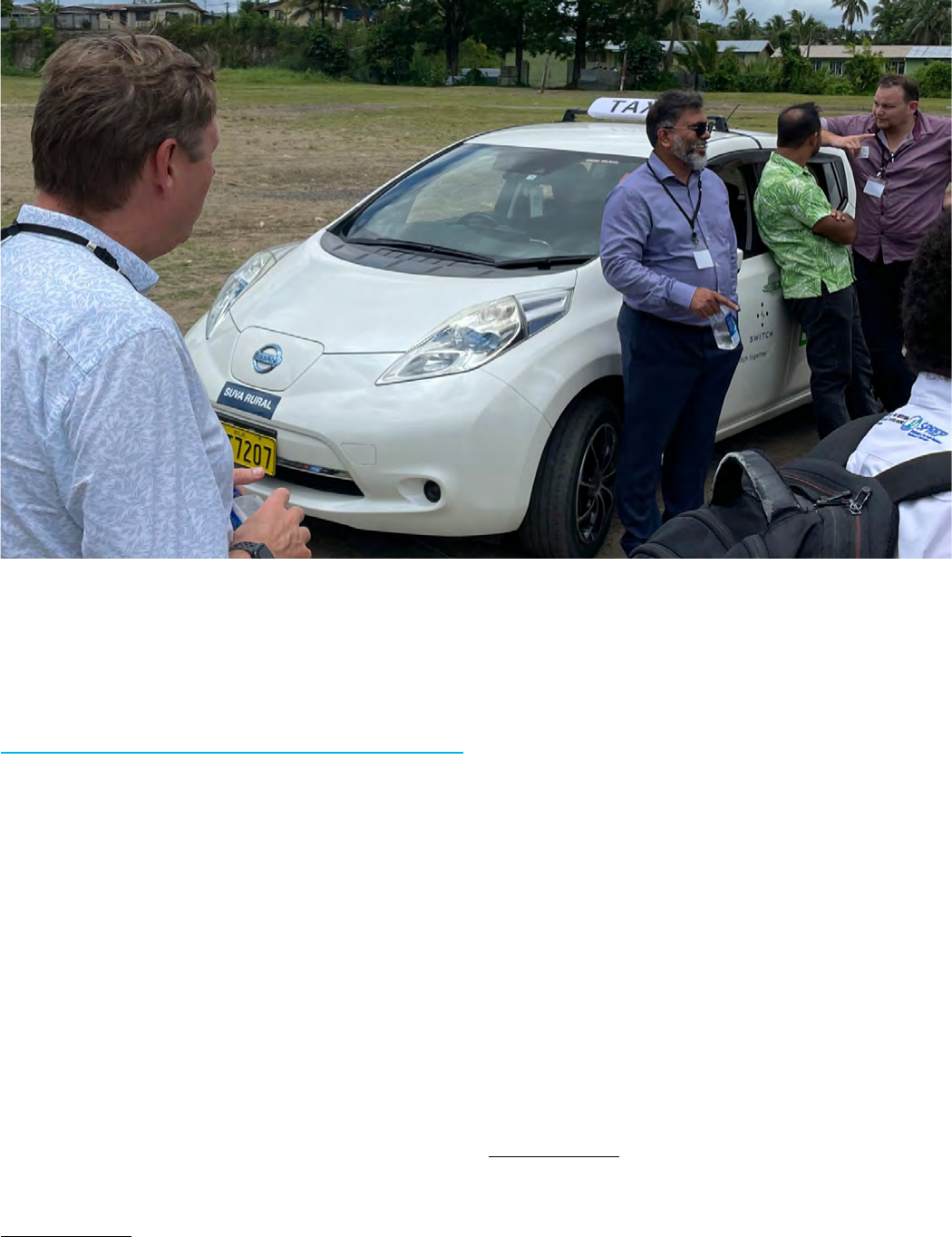
Electric Vehicle Retrotting: A Guide to Policy-Making
18
3
3. POLICY
MEASURES
3.1. GLOBAL BARRIERS FOR EV
RETROFITTING EXPANSION
EV retrotting has the potential to play an important
middle-ground role in the complete electrication of
transportation systems. Global economic and policy trends
for green technology, transport electrication, and climate-
friendly solutions provide an optimistic outlook of growth
and development for the market over the next decade.
57
However, persisting challenges still need to be addressed
for the industry to advance. Regulatory, technological, and
enabling barriers must be addressed for the ICE-to-EV
conversion industry to develop beyond its current infancy
stage into an adaptable and reliable low-carbon strategy for
national governments worldwide.
A major barrier identied concerns the lack of EV
retrotting-specic regulations within most countries. While
EV conversion kits are generally domestically available
in different markets – or, at the very least, the separate
57 Precedence Research, “Automotive retrot electric vehicle.”
parts to enable EV conversion –, the absence of specic
regulations and policies addressing the practice generates
safety hazards to both drivers and pedestrians. Given
that retrotting alters the mobility, weight distribution,
and electrical systems of the vehicle
58
, proper guidelines
and verication are necessary to assure its mechanical
integrity
59
. Another considerable point is that the lack
of safety guidelines or regulations compromises the
expansion of the industry. With no ofcial government
strategy, industry leaders hesitate in nancing the necessary
R&D investments to make the technology accessible to
consumers. Consequently, the lack of retrotting regulation
hinders the expansion of the industry into other markets and
jeopardizes its reach in different consumer pools.
60
A second major barrier concerns the current infancy level of
the retrotting industry and market. There is a restriction
on the variety of conversion kits available for consumers,
affecting the possible consumer pool for the technology.
61
Since ready-to-use conversion kits are made to be installed
into specic ICE models, consumers must undertake
specialized and costly individualized conversions if they do
not want to be limited by the market offer of kit models. The
market size also affects the total cost of ownership (TCO) of
possible retrotted vehicles. Without the necessary market
58 Hoeft, “Internal combustion engine to electric vehicle retrotting.”
59 Kukar, “Retrotting for electric vehicles.”
60 Winton, “Electric cars are too expensive for many.”
61 Kukar, “Retrotting for electric vehicles.”

Electric Vehicle Retrotting: A Guide to Policy-Making
19
investments and policy incentives, the technology might
not be cost-efcient to customers when compared to the
cost of the product and the cost of fuel for ICE vehicles.
62
While this report develops a nancial tool for more accurate
comparison between ICE, new EV, and retrotted vehicles,
the TCO of EV retrotting might still be a considerable
barrier to many possible consumers.
Lastly, there are environment-enabling challenges that
constrain the full expansion of retrotting solutions. The
lack of information available about EV conversion in many
countries, for example, generates hesitation and mistrust
from potential customers
63
. While new EVs have slowly been
gaining traction and popularity in the automobile market,
retrotting is still widely unknown by customers. The lack
of accessibility, visibility, and informational campaigns and
strategies leaves the solution out of consumers’ knowledge
and, consequently, underexplored. Additionally, this lack of
information can also result in improper conversion practices
that can present further risks to the technology’s legitimacy
and to users’ safety
64
.
Challenges must be addressed to allow the technology
to be further popularized. Public policies, incentives, and
regulatory systems play a major role in the expansion of
the EV retrot market.
65
Despite these barriers, several
countries present a scenario of policy best practices for the
recognition of EV retrotting as a process that is both viable
and worth investing in. The countries analyzed in this report
show comprehensive examples of public policies that are
specic to EV retrotting, allowing the industry to develop
and continue to grow.
3.2. ENABLING MEASURES
The following subchapter explores key enabling measures
for the EV retrotting industry and market’s further
development. It analyzes past experiences with similar
technologies as well as countries’ best practices to ofcially
support EV conversion, focusing on safety and technical
regulations, market incentives, R&D programs, and other
measures for normalization and expansion of the practice.
3.2.1 Safety and Technical Regulations
Safety and technical regulations are ofcial legislations
and standards that oversee the safety of the general
infrastructure and electrical systems of a vehicle. While
many of these standards align with those governing
manufacturing, retrotted vehicles must have their own set
of regulations to guarantee that the specic changes made
62 Kukar, “Retrotting for electric vehicles.”
63 Hoeft, “Internal combustion engine to electric vehicle retrotting.”
64 Meixner, “Electric vehicles enthusiasts convert their own petrol cars,
but engineers warn the risks of retrotting.”
65 Kukar, “Retrotting for electric vehicles.”
to the vehicle’s electric system, drivetrain, and other physical
attributes will not cause safety hazards to the driver and to
others within the vehicle’s range.
66
Ensuring a proper functioning of the electrical systems of a
retrotted vehicle is one of the main safety concerns after
a conversion. If not properly performed, the high voltage
of the newly inserted battery might cause sudden energy
releases and re hazards. Added batteries might also
present chemical risks if not properly tested and installed.
Another major concern is related to the drivetrain, which
were not initially projected to carry weighty batteries. If
installed without a proper engineering study, the battery
may cause weight distribution issues and later-set structural
damages to the vehicle’s drivetrain.
67
Currently, there is no standardization for retrotted EV
safety and technical standards. While individual components
can be acquired, the industry is still at infancy level in many
countries. Retrotting of old classic cars, for instance, might
be possible, but it is not strongly regulated beyond what
mandated for traditional EVs
68
. Some countries recognize
the potential of EV conversion for their decarbonization
goals and are creating the necessary legislation to oversee
and give incentives to its expansion
69
.
Some countries are taking a pioneer role on creating
regulatory standards. Taking inspiration from already
existing vehicular modication and tuning regulations,
they are working both on creating retrotting-specic
technical and safety standards as well as a simplication of
the certication process. Instead of testing all converted
vehicles, for example, a strategy many countries are adopting
are certifying mechanics and model-specic retrotting
kits
70
.
This strategy is being adopted more frequently amongst
countries, requiring the regularization of testing agencies
and the registration of specialized mechanics and
technicians. However, it is still common to nd regulations
that demand vehicle verication after the conversion
process, testing areas such as weight balancing, brake
performance, temperature resistance, noise levels, and
66 Watts, Ghosh, and Hinshelwood, “Exploring the potential for electric
retrot regulations.”
67 Watts, Ghosh, and Hinshelwood, “Exploring the potential for electric
retrot regulations.”
68 Berggreen, “What was I thinking? A tale of an EV conversion that was
over before it began” last modied May 18, 2023 https://cleantechnica.
com/2018/06/02/what-was-i-thinking-a-tale-of-an-ev-conversion-that-
was-over-before-it-began/.
69 Santiago, “La CDMX invertirá 20 mdp em conversión de autos de
combustión a eléctricos” last modied May 18, 2023 https://politica.
expansion.mx/cdmx/2022/02/03/cdmx-inversion-20-mdp-innovacion-
motores-electricos.
70 MMA, “Tuning auto: Que dit la loi en France?” last modied October
29, 2020, https://www.mma.fr/zeroblabla/tuning-auto-reglementation-
france.html#:~:text=EST%20PAS%20PERMIS-,La%20personnalisation%20
d’un%20v%C3%A9hicule%20est%20libre%20dans%20la%20
mesure,%C3%A0%20la%20l%C3%A9gislation%20en%20vigueur.

Electric Vehicle Retrotting: A Guide to Policy-Making
20
wiring harnesses
71
. Other verication simplications
commonly seen are on the environmental certications –
which, if the vehicle is fully converted to electrical, should be
nullied
72
.
Despite the recent advances in legislation, there is still room
for improvement. EV retrotting regulations are often based
on pre-existing EV regulations, which make them inexible
to the realities of different retrotting solutions. Standards
are usually designed according to procedures from countries
with major OEMs, such as the US, the European Union,
and Japan, and are, therefore, unt to the local needs for
vehicles in different areas
73
. Comprehensive safety and
technical regulations must be designed according to the
local environment and through consultations with the local
technical authorities and representations.
3.2.2. Market Incentives
Market incentives are common policy mechanisms to reduce
prices and promote more competitiveness to strategic but
expensive technologies
74
. Governments show experience on
adopting different market incentives to EV retrotting, with
policies differing according to their end goal.
Some market incentives contemplate expanding and
diversifying the industry. Initial applications of EV
conversion should be adapted to popular vehicle models
of local markets, requiring active modeling from the local
industries and technicians
75
. While some countries have
strong OEMs that are taking the lead in developing new
retrotting technologies
76
, all governments that recognize
the decarbonizing potential of EV conversion must create
policy incentives to develop the local market.
77
The market expansion of EV retrotting can serve
as a support for the long-term electrication of the
transportation sector. It offers more varieties to how
consumers choose to electrify their mobility, thereby
71 EV Reporter, “Regulatory framework for retrotting in India”, last
modied May 18, 2023 https://evreporter.com/regulatory-framework-for-
retrotting-in-india/.
72 EV Reporter, “Regulatory framework for retrotting in India”, last
modied May 18, 2023 https://evreporter.com/regulatory-framework-for-
retrotting-in-india/.
73 Republic of Kenya, “Electric vehicle standards in Kenya: Draft
summary report.” https://www.transport.go.ke/department/images/climate/
Electric_mobility_standards.pdf
74 Hardman, Chandan, Tal, Turrentine, “The effectiveness of nancial
purchase incentives for battery electric vehicles – A review of the evidence.”
75 Hoeft, “International combustion engine to electric vehicle
retrotting: Potential customers’ needs, public perception, and business.”
76 Paul Myles, “Toyota joins retrot EV powertrain push,” Automotive,
last modied January 16, 2023, https://www.tu-auto.com/toyota-joins-
retrot-ev-powertrain-push/.
77 Libeau, “Retrotting: A frugal, circular, and inclusive solution do
decarbonize our vehicle eet.”
promoting the development of charging infrastructure to
make EVs cheaper and more convenient to use
78
. Similarly,
countries with long-term EV strategies should investigate
retrotting as a complementary strategy to generate more
jobs in the maintenance market, which may otherwise
shrink due to the cost-efcient nature of EV services when
compared to ICEs.
79
Another essential incentive measure is identifying the
key stakeholders for EV retrotting expansion and
engagement. The stakeholders are usually startups that
enable the implementation of the solution in the market,
and car suppliers and manufacturers that contribute for
the know-how and the supply of the necessary parts for the
retrotting kits in the market
80
. Major OEMs, universities,
and research centers also play a major role in the
development and enhancement of the technology – these
stakeholders will be further explored in the next subchapter.
Many governments choose to shift their focus to promotion
of a wider consumer base. The adaptable nature of
retrotting allows seamless integration within already
established nancial incentives, subsidies, rebates, and other
policy incentives in place for traditional EVs
81
. While these
measures are simple to be adopted, they must explicitly
include EV retrotting to avoid confusions from consumers
on the possible incentives to ICE-to-EV conversion
82
.
Governments may either include retrotted vehicles in the
already-existing policies, or ofcially register retrotted
vehicles as EVs after their conversion.
83
Ideally, however,
is the design and implementation of retrotting-specic
consumer incentives to strengthen and market the solution
to potential customers.
3.2.3. R&D Programs
A key area for EV retrotting expansion is investing on
research and development (R&D) programs. Some major
automobile OEMs have recently announced their expansion
plans into EV retrotting kits
84
, projecting market expansion
for the solution soon. R&D is essential for the growth and
diversication of the market, for the improvement of the
78 Paul Myles, “Toyota joins retrot EV powertrain push,” Automotive,
last modied January 16, 2023, https://www.tu-auto.com/toyota-joins-
retrot-ev-powertrain-push/.
79 Libeau, “Retrotting: A frugal, circular, and inclusive solution do
decarbonize our vehicle eet.”
80 Hoeft, “International combustion engine to electric vehicle
retrotting: Potential customers’ needs, public perception, and business.”
81 Scooter Doll, “Electric vehicle tax credits and rebates available in
the US, sorted by state,” Electrek, last modied October 5, 2022, https://
electrek.co/2022/10/05/ev-tax-credit-rebate-states-electric-vehicles/.
82 République Française, Le retrot électrique: Quel cadre legal? Quelle
prime à la conversion? 2022.
83 République Française, Le retrot électrique: Quel cadre legal? Quelle
prime à la conversion? 2022.
84 Takewaza, “Tesla escapes niche position.”

Electric Vehicle Retrotting: A Guide to Policy-Making
21
retrotting process, and for guaranteeing the safety and
positive experience of the customers
85
.
As a globally nascent industry, EV conversion’s main
actors have been start-ups and specialized technicians
aiming to electrify old or classic vehicles
86
. However, for
the industry to continue to expand and for retrotting to
become a competitive solution in clean transportation, more
investment is needed in powertrain technology, engineering
adaptation solutions of popular vehicles, and cost reduction
of the essential parts for retrotting, especially lithium-ion
batteries.
While these challenges might initially appear as big barriers
for the nascent market, a positive insight is that most of
these barriers are shared with the EV automobile industry.
R&D investments in EV retrotting solutions can be
incorporated within already existing or future electrication
strategies in the value chain of the major automobile OEMs.
Recent announcements from Ford
87
, GM
88
, and Toyota
89
of
solutions’ development in line with their decarbonization
strategies might help popularize retrotting amongst other
key transportation players.
Despite the positive outlook brought by recent private
sector engagements, more attention must be brought to the
role governments and public actors have on the expansion
and popularization of the industry. EV retrotting is a
solution closely related to adapting the real transportation
needs of a population
90
, and thus cannot be solely led by
major international players. Local capacity-building and
technology development are essential for the retrotting
market’s expansion.
Some countries have started working closely with their local
players to further develop retrotting solutions according
85 Hoeft, “International combustion engine to electric vehicle
retrotting: Potential customers’ needs, public perception, and business.”
86 Banerjee, “EV powertrain retrotment market gains traction
with inux of organized players”, Money Control, last modied May
9, 2023 https://www.moneycontrol.com/news/technology/auto/ev-
powertrain-retrotment-market-gains-traction-with-inux-of-organised-
players-8899181.html
87 Chris Randall, “Ford announces electric conversion motor.” Electrive,
last modied August 27, 2021, https://www.electrive.com/2021/08/27/
ford-announces-electric-conversion-motor/.
88 Paul A. Eisenstein, “GM set to join fast-growing EV conversion
market,” The Detroit Bureau, last modied July 22, 2022, https://www.
thedetroitbureau.com/2022/07/gm-set-to-join-fast-growing-ev-
conversion-market/.
89 Thom Taylor, “Toyota says it plans to convert old cars into EVs,” Motor
Biscuit, last modied January 13, 2023, https://www.motorbiscuit.com/
toyota-says-plans-to-convert-old-cars-into-evs/.
90 Libeau, “Retrotting: A frugal, circular, and inclusive solution to
decarbonize our vehicle eet”. OECD Forum, last modied May 19, 2023
https://www.oecd-forum.org/posts/retrotting-a-frugal-circular-and-
inclusive-solution-to-decarbonize-our-vehicle-eet.
to their population’s needs. Local and regional governments
have developed incentive schemes for two- and three-
wheeler conversions in India
91
and Sri Lanka
92
, reecting the
real mobility needs of their population. Major conversion
strategies identify and engage with local partners to
improve and promote EV conversion, creating new R&D
opportunities in the local markets.
Earmarked EV retrotting R&D investments are still
essential to signalize more active engagement of the
private sector in the industry. An important example comes
from France’s EUR 20 million investment in scaling up
industrial solutions for EV retrotting kits
93
. Combining
R&D investments with adaptations to national legislation
send strong signals of the country’s industries’ strategy of
expansion to other EU markets.
3.2.4. Other Measures
The last policy measures focus on the capacity-building
and information promotion of EV retrotting technologies.
Often being categorized as an indirect type of incentives,
these play a key role in the popularization of infant industries
and markets. Their incorporation into ofcial electrication
strategies is central for the long-term adoption of new
technological solutions amongst customers.
Customer surveys conducted in markets with integrated
retrotting technologies show that there is still a high
level of skepticism amongst the population
94
. The lack of
information on the safety and reliability of EV conversion
caused mistrust with potential customers, who changed
their opinions after they were exposed to reliable marketing
strategies. Industrial investments and market expansion
plans must thus be aligned with information strategies to
shift skepticism from the solution.
While each set of policy measures has it inherit value to
contribute to the expansion of the retrotting market in
one direction, it is their combination that will guarantee its
comprehensive adoption. Technical and safety regulations
should be adopted in conjunction with marketing
campaigns, while market expansion cannot be unlinked
from technological and innovation investments. Despite the
industry’s early global stage, countries have started adopting
successful strategies that must be analyzed for their best
practices.
91 EV Reporter, “FAQs about retrotment of electric 3Ws.”
92 Hamza, “Sri Lanka partners with USAID to convert petrol-run
tuktuks to electricity.” Economy Next, last modied May 19, 2023 https://
economynext.com/sri-lanka-partners-with-usaid-to-convert-petrol-run-
tuktuks-to-electricity-98704/.
93 Gouvernement Française, La concertation sur le retrot électricque
est lancée, 2022
94 Hoeft, “Internal combustion engine to electric vehicle retrotting.”

Electric Vehicle Retrotting: A Guide to Policy-Making
22
3.3. EV RETROFITTING POLICIES
AMONGST GGGI MEMBERS
Among 46 GGGI members considered, ve countries –
Australia, Indonesia, Nepal, Sri Lanka, and the UK –have
enactedEV Conversion legislation. When applying the
division of Technical Regulation, Incentive Measures, and
Environment Enabling Measures, only Indonesia possesses
all three sets of regulations.
All countries identied present technical legislation to
oversee the technical retrotting procedures and certify
the proper registration of newly converted vehicles.
The ve countries require a newly retrotted vehicle to
undergo technical assessments to verify the full operation
of safety systems. This procedure is either done by a
certied technician or by each designated ofce. After the
technical verication, converted vehicles are registered as
EVs in Australia and the UK, and as a converted vehicle in
Indonesia.
Ofcial EV conversion incentives were identied in
Indonesia, Nepal, and the UK. The Indonesian government
recognized EV retrotting as a favorable strategy for the
decarbonization of their 2-wheelers eet and adopted
subsidies for its promotion. Nepal and the UK have instead
chosen to explicitly include EV conversion within some
of their EV policy incentives, granting tax reductions to
converted vehicles.
The last set of EV retrotting regulations are those policies
to promote enabling environments. Within the identied
countries, only R&D policies were present amongst the
members. The Indonesian government has deducted R&D
costs for the development of EV parts in-country as an
attempt to lower prices for future EV production. On the
other hand, the Sri Lankan government has recently signed
a MoU with the United States to promote the research and
conversion of ICE three-wheelers to electric in the country.
The limited number of EV retrotting legislations amongst
GGGI members reects the infancy level in which the
global market is currently at. However, following prior
identication of 19 members having EV retrotting solutions
in their domestic markets, it is advisable for countries
to develop ICE to EV retrotting-specic standards and
legislations. Market stakeholders in key countries have been
pushing for a broader adoption of the solution to secure
market growth in line with the popularization of other
electric mobility solutions
95
.
A mapping of EV retrotting policies and regulations
amongst GGGI members was performed to identify the level
of experiences. The result is as seen below:
95 Asociación Latinoamericana de Retrot, “Movilidad, cambiar motores
de combustión por eléctricos y cómo reducir emisiones a um menor costo”.
Last modied June 13, 2023. https://plataformaurbana.cepal.org/sites/
default/les/2022-04/Movilidad%2C%20cambiar%20motores%20
de%20combusti%C3%B3n%20por%20el%C3%A9ctricos%20y%20
c%C3%B3mo%20reducir%20emisiones%20a%20un%20menor%20costo.
pdf.
Table 5: EV Retrotting Policies by GGGI Members**
GGGI Countries Region
EV Retrotting
Legislation
Technical
Regulations
Incentive
Measures
Environment
Enabling Measures
Angola Africa
• • • •
Australia Pacic
• • • •
Bahrain Middle East
• • • •
Burkina Faso Africa
• • • •
Cambodia Asia
• • • •
Colombia Latin America
• • • •
Costa Rica Latin America
• • • •
Côte d’Ivoire Africa
• • • •
Denmark Europe
• • • •
Ecuador Latin America
• • • •
Ethiopia Africa
• • • •
Fiji Pacic
• • • •
Guyana Latin America
• • • •
Hungary Europe
• • • •
Indonesia* Asia
• • • •

Electric Vehicle Retrotting: A Guide to Policy-Making
23
Jordan Middle East
• • • •
Kazakhstan Asia
• • • •
Kiribati Pacic
• • • •
RoK Asia
• • • •
Kyrgyz Republic Asia
• • • •
Lao PDR Asia
• • • •
Mexico Latin America
• • • •
Mongolia Asia
• • • •
Nepal Asia
• • • •
Nicaragua Latin America
• • • •
Norway Europe
• • • •
OECS Latin America
• • • •
Pakistan Asia
• • • •
Papua New Guinea Asia
• • • •
Paraguay Asia
• • • •
Peru Latin America
• • • •
Philippines Pacic
• • • •
Qatar Middle East
• • • •
Rwanda Africa
• • • •
Senegal Africa
• • • •
Sri Lanka* Asia
• • • •
Thailand Asia
• • • •
Tonga Pacic
• • • •
Turkmenistan Asia
• • • •
UAE Middle East
• • • •
Uganda Africa
• • • •
UK Europe
• • • •
Uzbekistan Asia
• • • •
Vanuatu Pacic
• • • •
Vietnam Asia
• • • •
Kenya* Africa
• • • •
* The countries marked have been selected as case studies for the nancial assessment chapter
** Refer to Appendix for further information on each policy identied
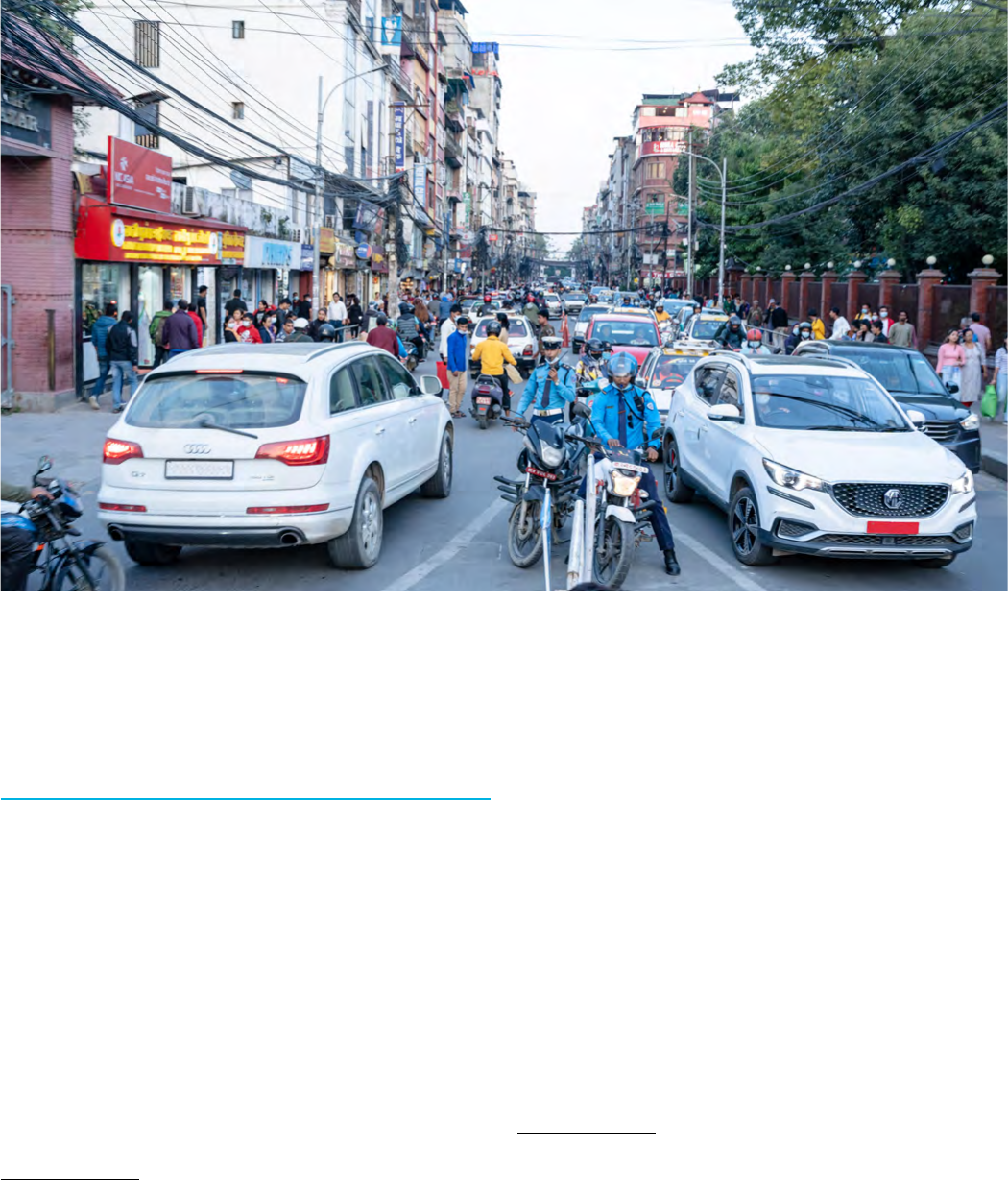
Electric Vehicle Retrotting: A Guide to Policy-Making
24
4.1. ECONOMIC BENEFITS FOR LDVs
Kenya’s 2018-2022 National Climate Change Action Plan
(NCAP) identies the development of domestic e-mobility
technology as a strategy for cutting GHG emissions and
adapting Kenya’s infrastructure to climate change
96
. Key
companies including Roam Electric have been leading
the e-mobility market in the country, working with the
government to create sustainable policy and market
conditions for the growth of the adoption rates in the
years to come
97
. Retrotting EV has been considered as
an option to accommodate the decarbonization demand
while maintaining accessible costs for the population
98
. In
Kenya, the conversion of passenger vehicles was adopted
with special attention to utility vehicles for the mining,
96 Government of Kenya, “National Climate Change Action Plan: Second
Implementation status Report for the FY2019/2020”.
97 Wachira, “Kenya’s electric vehicle market is raring to go”. Last modied
June 06, 2023. https://chinadialogue.net/en/transport/kenyas-electric-
vehicle-market-is-raring-to-go/
98 Siele, “Electric conversion: How Kenyan motorists are cutting
costs”, last modied May 02, 2023. https://businesstoday.co.ke/electric-
conversion-how-kenyan-motorists-are-cutting-costs/.
4
4. FINANCIAL
ASSESSMENT
safari, and tourism industries
99
. Considering more than
95% of registered cars being secondhand
100
, EV retrotting
technologies will play a prominent role of decarbonation in
Kenya transport sector.
In this line, this report conducted comparative economic
analysis of four-wheelers retrotting with the case of
Kenya. For the economic assessment of passenger vehicles
in Kenya, this report mainly refers to the 2019 GIZ report
“Updated Transport Data in Kenya 2018”. Additional data
were retrieved from the main EV retrotting company,
Roam Electric
101
- former Opibus –, and local data.
This analysis is to fairly reect the economic benets of
retrotted electric passenger vehicles. The baseline internal
combustion engine (ICE) passenger vehicle Landcruiser
70 Series 2023) is dened as the current 4W operating in
Nairobi that would be standard model in compliance with all
legal requirements and in accordance with standard current
business practices.
99 Page, “Opibus: The mobility startup converting Kenya to
electric vehicles”. Last modied June 06, 2023. https://edition.cnn.
com/2022/03/01/africa/opibus-kenya-electric-mobility-bus-motorcycle-
car-spc-intl/index.html
100 UNEP, “Used vehicles and the environment: A global overview of
used light duty vehicles-ow, scale, and regulation”.
101 Roam Electric. “Off Road”, last modied June 06 2023. https://www.
roam-electric.com/off-road

Electric Vehicle Retrotting: A Guide to Policy-Making
25
Capital expenditure (CAPEX) includes vehicle investment
costs and partial replacement investment costs such as
batteries. The projection of real battery prices for electric
4W is 2,131.5 USD based on local data. Operational
expenditure (OPEX) is mainly including maintenance and
energy costs including diesel for ICE vehicles and electricity
for electric ones. The market electricity price for E4Ws
is taken with the assumption of 9,221.16 kWh annual
consumption.
Comparative analysis of new ICE 4W vehicle, new electric
4W vehicle and retrotted electric 4W vehicle over the
lifespan of 15 years is conducted. The following table shows
key parameters utilized for nancial calculations.
Table 6. Key parameters for comparative Economic Analysis of
4Ws
Parameters New ICE 4W New E4W Retroed
E4W
CAPEX Vehicle
cost
USD 45,363.00
(KES
6,394,000)
USD
57,595.40
(KES
8,000,000)
USD
39,900.00*
(KES
5,542,110)
Baery
Replace-
ment Cost
N/A USD 2,131.50
(KES
300,000)**
USD
2,131.50
(KES
300,000)**
Subsidy N/A N/A N/A
OPEX Fuel Cost
per year
Diesel: USD
2,959.89/year
(USD 1.244/l)
USD 1,189.53/
year
(USD 0.129/
kWh)
USD
1,189.53/
year
(USD 0.129/
kWh)
Annual
Mainte-
nance
cost
USD 3,500
(KES 488,250)
***
USD 1,247.82
(KES 173,956)
USD
1,247.82
(KES
173,956)
***
Annual
Insurance
N/A N/A N/A
Interest
rate
9.5% 9.5% 9.5%
TECH-
NICAL
Lifespan 15 years 15 years 15 years***
Driving
Distance
60.8km/day (22,223 km/year****)
Fuel
eciency
per km
9.34 km/L 2.41 km/kWh 2.41 km/
kWh
Emission
factor
0.17Kg CO2e/
km ****
0.2kgCO2e/
kWh
0.2kgCO2e/
kWh*****
* Cost of retrotted E4W: Used ICE vehicle cost + conversion kit +
service fee (obtained from roam-electric.com)
** Retrieved from Subbru, 2022 (https://ke.opera.news/ke/en/
auto/f17a8c2cee84cd8b34bec2919e6611b4)
*** Retrieved from Roam Electric website (roam-electric.com)
**** Retrieved from GIZ, 2019
***** Retrieved from Our World in Data, 2023 (https://
ourworldindata.org/co2/country/kenya#carbon-intensity-how-
much-carbon-does-it-emit-per-unit-of-energy)
Economic analysis is to estimate the economic benets
of adopting retrotted E4Ws by comparing them with
second-hand ICE 4Ws and new E4Ws. In this analysis, total
cost of ownership (TCO) and unit travel cost (USD/km)
indicators are used to determine the economic benets.
The economic analysis is carried out according to the
methodology presented in this report, utilizing 9.5% of the
interest rate set by Trading Economics. The following table
shows the expected economic benets of retrotted electric
4W vehicles. TCO of incremental economic benets from
3 types of vehicle options is calculated as USD 100,736
per new ICE 4W vehicle, USD 82,913 per new E4W, and
USD 65,217 per retrotted E4W respectively. The unit
travel cost of retrotted E4W is 0.249 USD/km, which is
comparatively lower than the other two options.
Table 7. The result of comparative Economic Analysis of 4Ws
New ICE 4W New E4W
Retroed
E4W
Total Cost of
Ownership (TCO)
100,736 82,913 65,217

Electric Vehicle Retrotting: A Guide to Policy-Making
26
Travel Cost per
km
0.427 0.302 0.249
The following table shows the expected environmental
impact of the retrotted E4W eet per annum. In terms
of local pollutants, new E4W and retrotted E4W options
reduce PM
2.5
and NO
x
emissions by 100%.
Table 8. Environmental Impacts of 4Ws
GHG Emissions New ICE 4W New E4W
Retroed
E4W
CO
2
(kgCO2e)
Per km 0.17 0.08 0.08
Annual 3,777.91 1,844.23 1,844.23
Lifespan 56,668.65 27,663.49 27,663.49
PM
2.5
(g)
Per km 0.090 0.000 0.000
Annual 1,991.206 0.000 0.000
Lifespan 29,868.083 0.000 0.000
NO
x
(kg)
Per km 0.016 0.000 0.000
Annual 348.068 0.000 0.000
Lifespan 5,221.018 0.000 0.000
4.2. ECONOMIC BENEFITS FOR 3Ws
Sri Lankan mobility patterns are heavily reliant on private
vehicle ownership, with three-wheelers accounting for
the third most recurrent vehicle type
102
. Converting the
transportation eet to electric is strategic not only to
reduce the country’s emissions and reach its mitigation
goals but also to reduce Sri Lanka’s dependency on fossil
fuels
103
. This is specically important in the face of recent
102 Madhuwanthi et al, “Factors inuencing to travel behavior on
transport mode choice”
103 Gajanayake et al, “Study of the impact of electric vehicles on fuel
consumption and carbon dioxide emission scenarios in Sri Lanka”
severe economic crises caused by fuel shortages
104
. Three-
wheelers in Sri Lanka are a key transportation mode for
passenger carriers, benetting specically the elderly, the
children, middle-income families, and women
105
. With the
advancement of mobile taxi apps and services
106
, the three-
wheelers eet is expected to expand in the years to come,
creating a promising market for three-wheeler retrotting
services and technologies.
For the nancial analysis of three-wheelers retrotting,
the case of Sri Lanka was chosen. The data used for the
nancial assessment of 3-wheeler vehicles in Sri Lanka
was mainly based in the Thilakshan, Sugathapala, and
Bandara (2019) report “Electric Vehicles as a Sustainable
Mode of Transportation – The Sri Lankan Context” and
the Gajanayake et al (2020) report “Study of the Impact of
Electric Vehicle on Fuel Consumption and Carbon Dioxide
Emission Scenarios in Sri Lanka”. Other additional data were
retrieved from the main EV retrotting company identied,
SL Mobility
107
.
This analysis is to fairly reect the economic benets of
retrotted electric passenger vehicles. The baseline internal
combustion engine (ICE) 3W vehicle is dened as the
currently operating model in Colombo city in compliance
with all legal requirements and in accordance with standard
current business practices.
CAPEX includes vehicle investment costs and partial
replacement investment costs such as batteries. The
projection for real battery prices for electric 3W is 1,500
USD based on UNDP data. OPEX is mainly including
maintenance and energy costs which differ relative to the
technology used. The market electricity price for E3Ws
is taken with the assumption of 4,701.2 kWh annual
consumption.
Comparative analysis of new ICE 3W vehicle, new electric
3W vehicle and retrotted electric 3W vehicle over the
lifespan of 10 years is conducted. The following table shows
key parameters used for nancial calculations.
104 Kurukulasuriya, “Sri Lanka’s energy crisis is a glimpse of what’s
coming”. Last modied June 12, 2023. https://www.undp.org/blog/sri-
lankas-energy-crisis-glimpse-whats-coming
105 Madhuwanthi et al, “Factors inuencing to travel behavior on
transport mode choice”
106 Goldstein Market Intelligence, “Sri Lanka three-wheeler market
trends, challenges, key players, demand & growth drivers analysis with
regional outlook for forecast period 2016-2024”. Last modied June 12,
2023. https://www.goldsteinresearch.com/report/sri-lanka-three-wheeler-
market-analysis
107 SL Mobility. “Conversion Kit”, last modied June 07 2023. https://
www.slmobility.com/products/conversion-kit
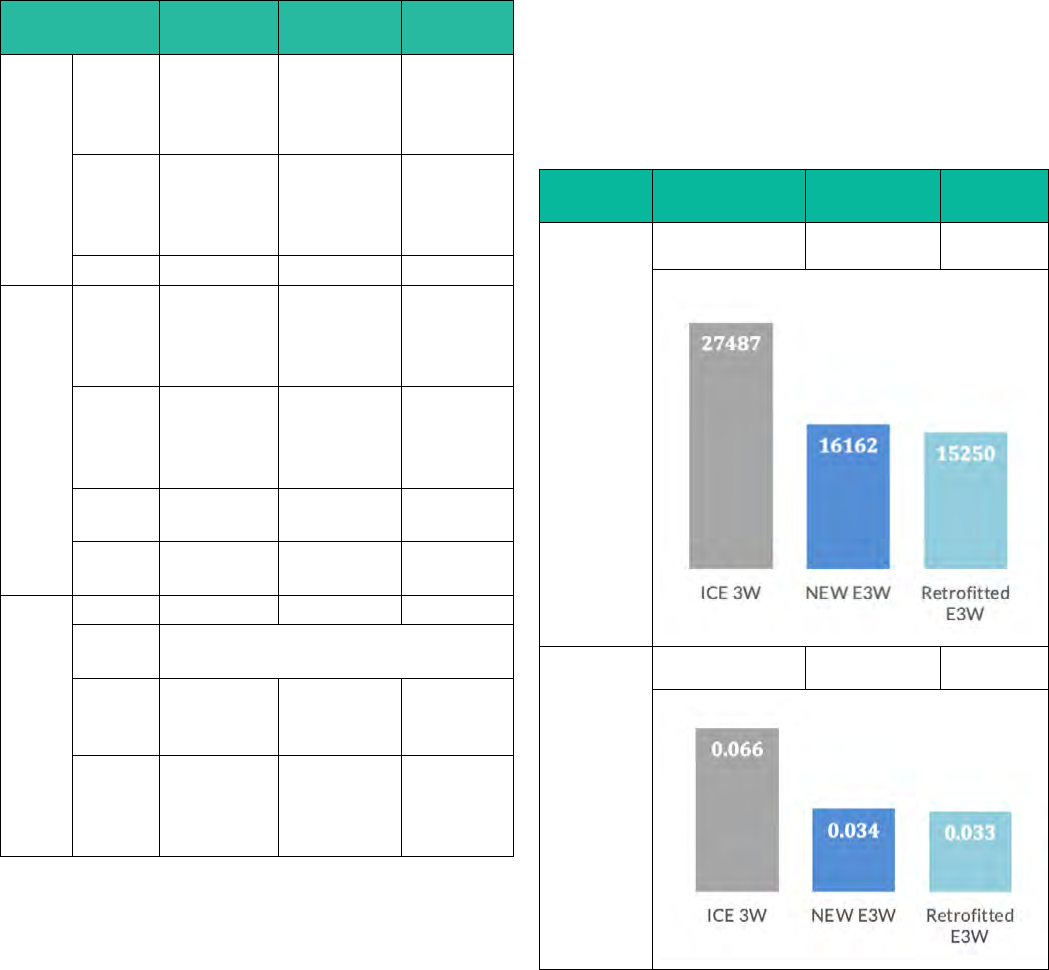
Electric Vehicle Retrotting: A Guide to Policy-Making
27
Table 9. Key parameters for comparative Economic Analysis of
3Ws
Parameters New ICE 3W New E3W Retroed
E3W
CAPEX Vehicle
cost
USD 3,259*
(LKR
1,000,000)
USD 4,562*
(LKR
1,400,000)
USD 3,650*
(LKR
1,120,000)
Baery
Replace-
ment
Cost
N/A USD 1,500* USD 1,500*
Subsidy N/A N/A N/A
OPEX Fuel Cost
per year
USD 3,464.19
(LKR
1,005,903.43)
USD 1,209.60
(LKR 367,584)
USD
1,209.60
(LKR
367,584)
Annual
Mainte-
nance
cost
USD 207.33
(LKR 60,204)
**
USD 144.97
(LKR 42, 097)
USD 144.97
(LKR 42, 097)
Annual
Insurance
N/A N/A N/A
Interest
rate
15.5% 15.5% 15.5%
TECH-
NICAL
Lifespan 10 years 10 years 10 years
Driving
Distance
161km/day (58,765 km/year**)
Fuel
eciency
per km
20 km/L** 12.5 km/kWh 12.5 km/
kWh ****
Emission
factor
2.4 Kg CO2e/
km***
Kg C/kgOE
0.585kgCO2e/
kWh*****
0.585kg-
CO2e/
kWh*****
* Retrieved from the nancial-economic analysis on Tuktuk
conversions in SL done by the UNDP
** Retrieved from Thilaskhan, Sugathapal, Bandara (2019)
*** Retrieved from SL Mobility (slmobility.com)
**** Retrieved from UNEP, 2019 (https://www.unep.org/
news-and-stories/story/taming-sputtering-tuk-tuk-sri-lankan-
innovator-develops-affordable-electric)
***** Retrieved from Central Bank of Sri Lanka (2017)
Economic analysis is to estimate the economic benets of
adopting retrotted E3Ws by comparing 3 types of 3W
vehicles. In this analysis, total cost of ownership (TCO) and
unit travel cost (USD/km) indicators are used to determine
the economic benets. The economic analysis is carried
out according to the methodology presented in this report,
utilizing 15.5% of the interest rate set by Trading Economics.
The following table shows the expected economic benets
of retrotted electric 3W vehicles. TCO of incremental
economic benets from 3 types of vehicle options is
calculated as USD 27,487 per new ICE 3W vehicle, USD
16,162 per new E3W, and USD 15,250 per retrotted E3W
respectively. The unit travel cost of a retrotted E3W is
0.033 USD/km, which is comparatively lower than an ICE
3W (0.066 USD/km) and a New E3W (0.034USD/km).
Table 10. The result of comparative Economic Analysis of 3Ws
New ICE 3W New E3W
Retroed
E3W
Total Cost of
Ownership
(TCO)
27,487 16,162 15,250
Travel Cost
per km
0.066 0.034 0.033
The following table shows the expected environmental
impact of the retrotted E3W eet per annum. In terms
of local pollutants, new E3W and retrotted E3W options
reduce PM
2.5
and NO
x
emissions by 100%.
Table 11. Environmental Impacts of 3Ws

Electric Vehicle Retrotting: A Guide to Policy-Making
28
GHG Emissions ICE 3W New E3W
Retroed
E3W
CO
2
(kgCO2e)
Per km 0.12 0.05 0.05
Annual 7,051.80 2,750.20 2,750.20
Lifespan 70,518.00 27,502.02 27,502.02
PM
2.5
(g)
Per km 0.013 0.000 0.000
Annual 785.744 0.000 0.000
Lifespan 7,857.438 0.000 0.000
NO
x
(kg)
Per km 0.002 0.000 0.000
Annual 116.073 0.000 0.000
Lifespan 1,160.729 0.000 0.000
4.3. ECONOMIC BENEFITS FOR 2Ws
For the nancial analysis of two-wheelers retrotting,
the case of Indonesia was chosen. Despite its archipelago
formation, Indonesia’s transportation is dominated by
the road subsector – with over 90% of the modal shares
for passengers being in-road
108
. Particularly motorcycles,
consistuting over 80% of the country’s land transportation
mods,have gained increasing popularity.
109
. In a move to
attempt to curb GHG emissions, the Indonesian government
implemented legal frameworks and tax incentives to
increase the adoption rates of electric vehicles – specically
electric motorcycles
110
. The E2W conversion is an innovative
solution that holds promising potential for expansion in the
Indonesian market.
The data used for the nancial assessment of passenger
vehicles Indonesia was mainly based in the Afraah et al
(2021) report “Comparing Total Cost of Ownership of
Electric and Conventional Motorcycles in Indonesia”.
This analysis is to fairly reect the economic benets of
retrotted electric two wheelers. The baseline internal
combustion engine (ICE) two-wheeler is dened as the
current two-wheeler operating in the West Java Province
that would be standard model in compliance with all legal
requirements and in accordance with standard current
business practices.
CAPEX includes vehicle investment costs and partial
replacement investment costs such as batteries. The
108 Asian Development Bank, “Indonesia: Transport sector assessment,
strategy, and road map”
109 Asian Development Bank, “Indonesia’s Summary Transport
Assessment”.
110 Habibie, Sutopo, “A literature review: Commercialization study of
electric motorcycle conversion in Indonesia”
projection of real battery prices for electric 2W is 149.28
USD. OPEX primarily covers maintenance and energy
costs which vary based on the technology used. The market
electricity price for E2Ws is taken with the assumption of
361.13 kWh annual consumption.
Comparative analysis of new ICE 2W vehicle, new electric
2W vehicle and retrotted electric 2W vehicle over the
lifespan of 15 years is conducted. The following table shows
default parameters used for nancial calculations.
Table 12. Key parameters for comparative Economic Analysis of
2Ws
Parameters New ICE 2W New E2W Retroed
E2W
CAPEX Vehicle
cost
USD
1,187.58 (IDR
17,650,000)
USD
1,277.74 (IDR
18,990,000)
USD
1,914.26
(IDR
28,450,000)
million*
Baery
Replace-
ment Cost
N/A USD 149.28
(2,203,260
IDR)**
USD 149.28
(2,203,260
IDR)**
Subsidy N/A USD 471 (IDR
7,000,000)
USD
471 (IDR
7,000,000)
OPEX Fuel Cost
per year
USD 160.21
(USD 0.95 per
litre)
USD 28.89
(USD 0.08 per
kWh)
USD 28.89
(USD 0.08
per kWh)
Annual
Mainte-
nance
cost
USD 8.10
(IDR 119,000)
USD 4.76
(IDR 70,000)
per ser-
vice***
USD 4.76
(IDR 70,000)
per service
***
Annual
Insurance
1.5% of vehicle
price
1.5% of vehi-
cle price
1.5% of
vehicle
price***
Interest
rate
5.75% 5.75% 5.75%****
TECH-
NICAL
Lifespan 15 years 15 years 15 years
Driving
Distance
28km/day (10,220 km/year)***
Fuel
eciency
per km
60.6 km/L 28.3 km/kWh 28.3 km/
kWh
Emission
factor
2.3g CO2e/km 0.81kgCO2e/
kWh
0.81kg-
CO2e/
kWh*****
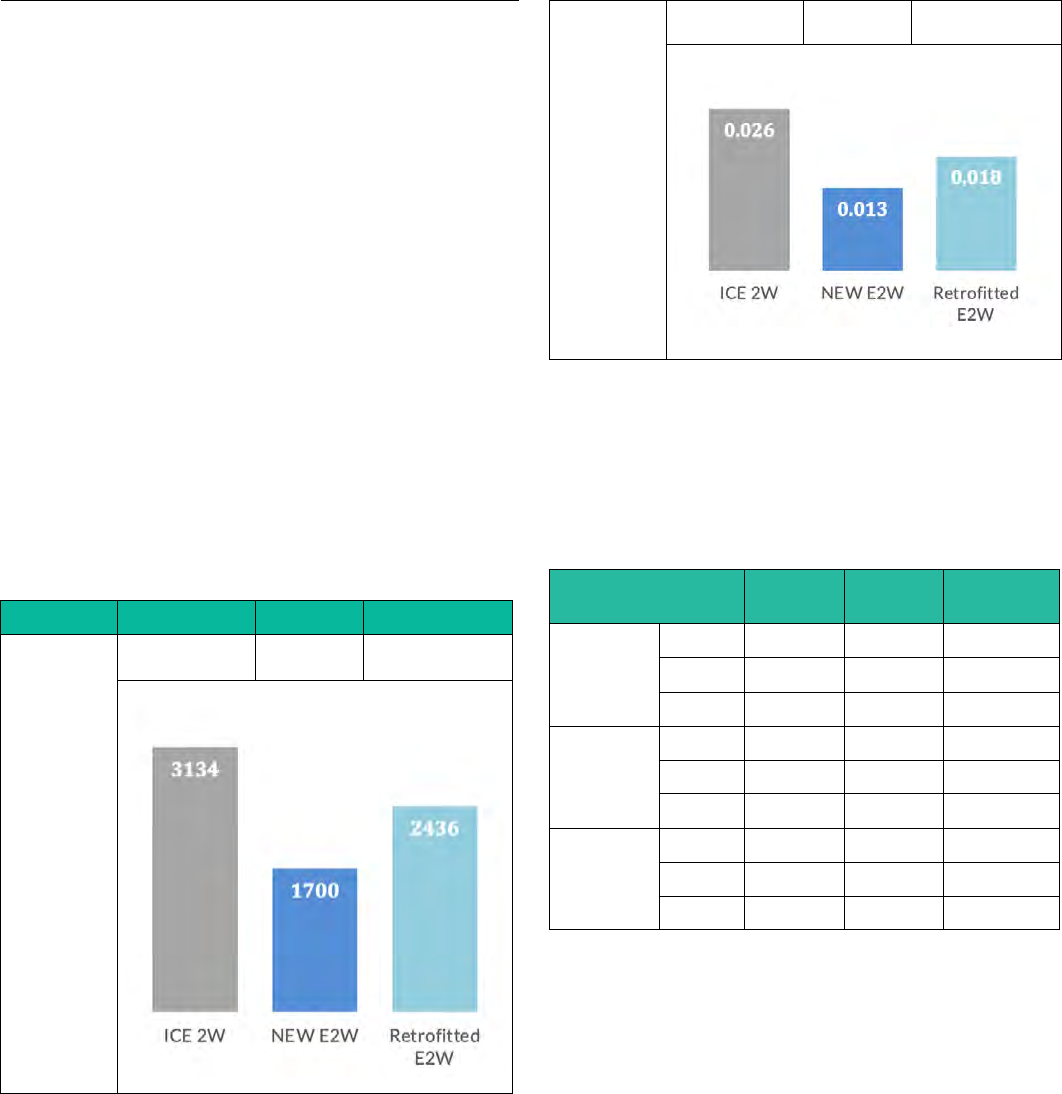
Electric Vehicle Retrotting: A Guide to Policy-Making
29
* Cost of retrotted E2W: Used ICE vehicle cost + conversion kit
+ service fee (calculated from data available by Afraah et al, 2021)
** Retrieved from Afraah et al, 2021
*** Retrieved from Afraah et al, 2021
**** Retrieved from Trading Economics, 2023
***** Retrieved from Climate Transparency, 2021
Economic analysis is to estimate the economic benets of
adopting retrotted E2Ws by comparing 3 types of 3W
vehicles. In this analysis, total cost of ownership (TCO)
and unit travel cost (USD/km) indicators are used to
determine the economic benets. The economic analysis
is carried out according to the methodology presented in
this report, utilizing 5.75% of the interest rate set by the
trading economics. The following table shows the expected
economic benets of retrotted electric 2W vehicles. TCO
of incremental economic benets from 3 types of vehicle
options is calculated as USD 3,134 per New ICE 2W vehicle,
USD 1,700 per New E2W, and USD 2,436 per retrotted
E2W respectively. The unit travel cost of a retrotted E2W
is 0.018 USD/km, which is lower than an ICE 2W (0.026
USD/km), but higher than a New E2W (0.013 USD/km).
Table 13. The result of comparative Economic Analysis of 2Ws
New ICE 2W New E2W Retroed E2W
Total Cost of
Ownership
(TCO)
3,134 1,700 2,436
Travel Cost
per km
0.026 0.013 0.018
The following table shows the expected environmental
impact of the retrotted E2W eet per annum. In terms
of local pollutants, new E2W and retrotted E2W options
reduce PM
2.5
and NO
x
emissions by 100%.
Table 14. Environmental Impacts of 2Ws
GHG Emissions
New ICE
2W
New E2W
Retroed
E2W
CO
2
(kgCO2e)
Per km 0.04 0.03 0.03
Annual 387.89 292.52 292.52
Lifespan 5,818.32 4,387.74 4,387.74
PM
2.5
(g)
Per km 0.007 0.000 0.000
Annual 68.326 0.000 0.000
Lifespan 1,024.883 0.000 0.000
NO
x
(kg)
Per km 0.001 0.000 0.000
Annual 10.093 0.000 0.000
Lifespan 151.399 0.000 0.000
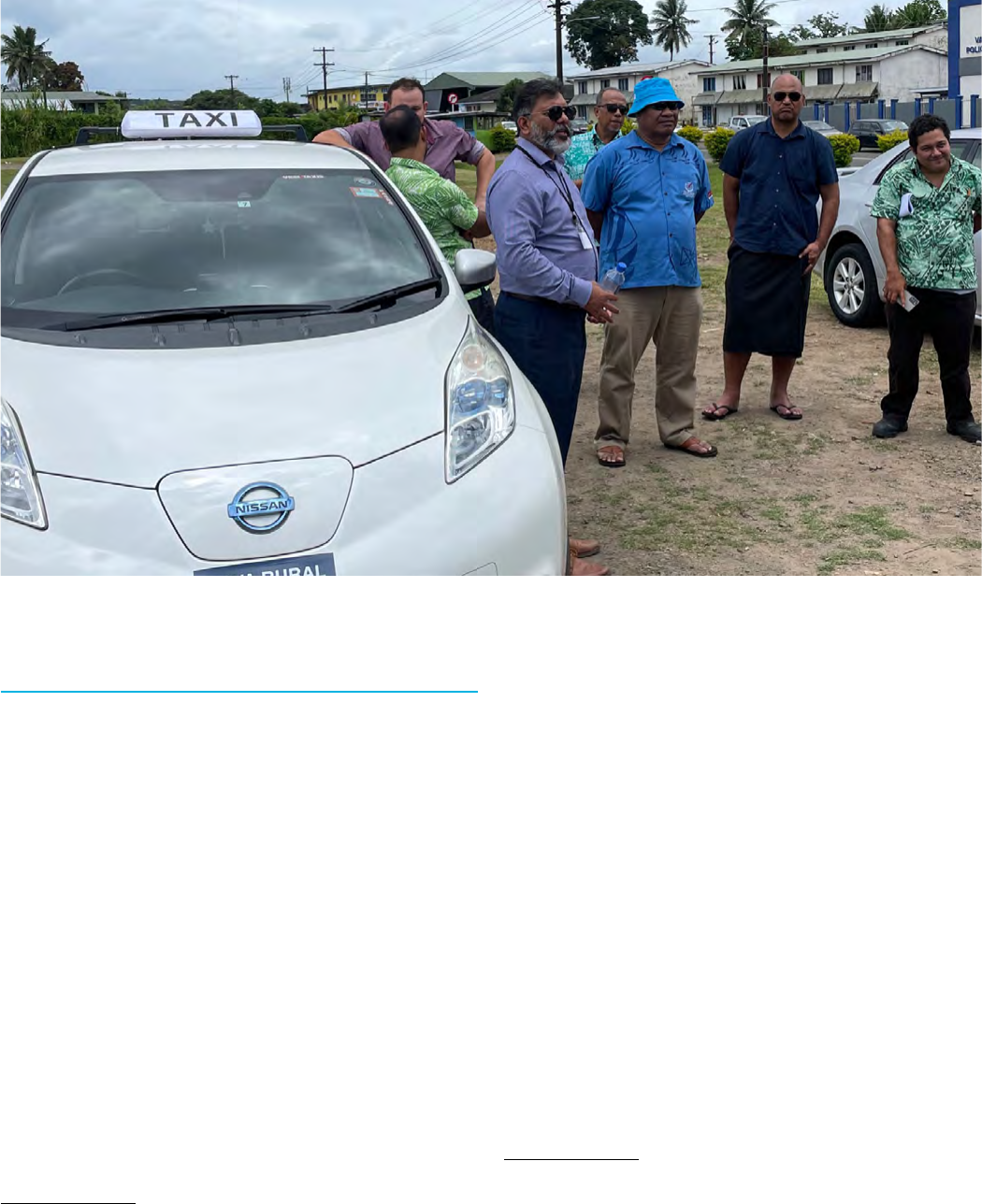
Electric Vehicle Retrotting: A Guide to Policy-Making
30
5.1. FRANCE
While not the rst in the European Union to adopt specic
strategies and regulations to enable the expansion and
popularization of EV retrotting, France’s policy prole
and history provide a relevant case for analysis. The
country already had strict laws for vehicular tuning and
modications, requiring any transformative modication
(i.e., modications that affect the vehicle’s descriptive
characteristics, or categorization) to be ofcially registered
and altered in the vehicle’s documentation.
111
EV
retrotting previously followed a similarly strict process,
requiring each individual vehicle to be re-registered and
veried by specialists before being given authorization for
circulation—a costly and time-consuming process.
112
A modication in the legislation in 2020, however, allowed
for a simplication of the certication process. Rather
than focusing on the certication of each vehicle, the new
legislation allows for the homologation of EV kits by model.
The EV conversion kits must be submitted to the authorities
111 MMA, “Tuning auto: Que dit la loi en France?” last modied October
29, 2020, https://www.mma.fr/zeroblabla/tuning-auto-reglementation-
france.html#:~:text=EST%20PAS%20PERMIS-,La%20personnalisation%20
d’un%20v%C3%A9hicule%20est%20libre%20dans%20la%20
mesure,%C3%A0%20la%20l%C3%A9gislation%20en%20vigueur.
112 Luthereau, “Le retrot électrique.”
5
5. CASE STUDIES
for technical verication and, after approval, can be installed
in vehicles that i) are roadworthy, ii) are registered in
France, and iii) are over ve years old.
113
Customers must
seek government-certied technicians for the installation
of government-approved EV conversion kits, warranting a
Certicate of Conformity and a modication of the vehicle’s
registration card to an EV.
114
Converted EVs are ofcially registered not only as EVs but
also as new vehicles under insurance companies, allowing
for older vehicles to be given greater benets for insurance
after conversion.
115
Additionally, because converted EVs
are registered as EVs, with no differentiation given to their
converted hardware, they benet from other government
incentives for EV acquisition and ownership. An important
example is the explicit consideration of EV conversion
in France’s EV rebate scheme, since April 2022, making
vehicles eligible for rebates of EUR 1,100 for two- and
three-wheelers, EUR 2,500 to 5,000 for four-wheelers, and
EUR 5,000 to 9,000 for HDVs.
116
Regularization of the EV conversion process and
the inclusion of EV conversion within the country’s
113 Transition One, Homepage, accessed October 3, 2022.
114 République Française, Arrêté du 13 mars 2020 relatif aux conditions
de transformation des véhicules à motorisation thermique en motorisation
électrique à batterie ou à pile à combustible, 2020.
115 TOLV, Choisir la meilleure assurance pour son véhicule après retrot,
accessed January 20, 2023.
116 République Française, Le retrot électrique: Quel cadre legal? Quelle
prime à la conversion? 2022.
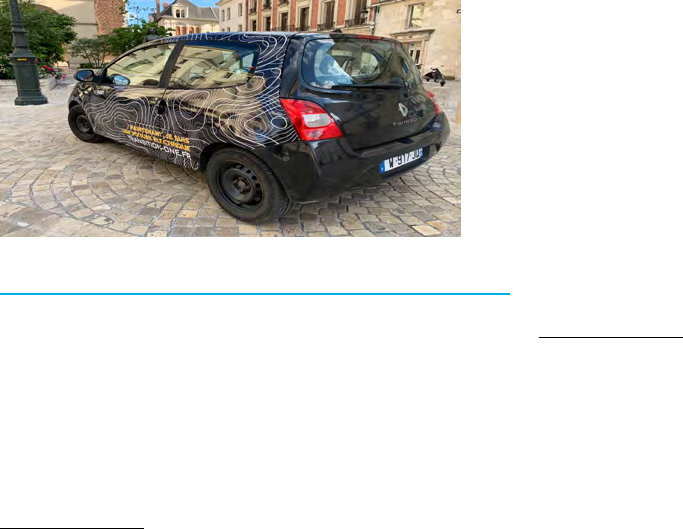
Electric Vehicle Retrotting: A Guide to Policy-Making
31
electrication incentive schemes follow the national strategy
of decarbonizing the transportation system and investments
in the innovation of the national automobile sector.
117
EV
retrotting is regarded as a complementary solution to new
EVs, and start-up companies focused on the French market
are rst investing in the development and homologation
of EV retrot kits of popular French vehicle models to, in a
second phase, expand the technology to the wider European
Union market.
118
The French legislation was ofcially changed in 2020,
allowing companies to adapt their production system for the
new challenge of EV conversion. Since then, the government
has not only promoted direct EV retrotting incentives but
has also announced an investment of EUR 20 million to
retrotting professionals “to nance industrial solutions that
allow the technology to be scaled up in order to lower the
unit cost” of each EV conversion kit.
119
With the purpose of
democratizing EV retrotting, France is actively nancing
and exploring innovative solutions and technologies within
its automobile sector to adapt to the decarbonization
ambitions of the European Union, giving EV retrotting the
policy portfolio required for its development.
Figure 6: Transition-One electric Renault Twingo II conver-
sion
120
5.2. UNITED STATES
Despite already existing for many years, the United
States’ EV retrotting market mainly targets the
conversion of classic and alternative vehicles, enabling
their transformation to an electried automobile
system.
121
EV conversion companies operate on a small
scale, usually working on a custom model basis to allow
117 Luthereau, “Le retrot électrique.”
118 Luthereau, “Le retrot électrique.”
119 Gouvernement Française, La concertation sur le retrot électricque est
lancée, 2022.
120 Eric C. Evarts, “French company makes EV conversions easy
for old clunkers,” Green Car Reports, last modied 2019, https://www.
greencarreports.com/news/1124381_french-company-makes-ev-
conversions-easy-for-old-clunkers.
121 David M. Kuchta, “Best EV conversion companies,” Treehugger,
last modied December 12, 2022, https://www.treehugger.com/electric-
vehicle-ev-conversion-companies-85249.
for more adaptability of older classic vehicles. Although
customization remains a popular form of EV retrotting in
the US, recent state-level regulations and policies toward a
possible transition of the market, with modern retrotting
alternatives becoming more common for the usual
customer.
122
The United States requires federal legislation certifying
the safety and regulating the procedure for EV conversion.
Ofcial safety standards and regulations of the US
Environmental Protection Agency and the National
Highway Trafc Safety Administration dictate that vehicle
conversions requiring the addition of heavy battery systems
or additional fuel tanks—which may alter a vehicle’s center
of gravity, payload capacity, or handling characteristics—
need to be crash-tested and certied.
123
Similarly, vehicle
owners interested in converting their vehicles must work
with the manufacturer or an authorized representative. The
conversion is performed by a technician associated with
the manufacturer, who holds the relevant emissions and
tampering certications.
124
While national legislation governs conversion procedure
and safety certication, states possess the jurisdiction to
promote additional safety standards and EV conversion
incentives. Examples of state-level incentives are ownership
tax exemptions in Arizona, an income tax credit in
Washington, D.C.,
125
and a rebate system for EV conversion
in California.
126
In addition to the rebate incentive, California
developed guidelines for qualifying conversion types and
eligible motors, power systems, and parts.
127
During a time of decarbonization and modernization
of transportation eets, the United States’ automobile
market and customer base faces the challenge of trading
older vehicles—many of them associated with collectors—
for newer, more expensive EV models. While national
legislation provides clear guidelines to ensure the safety
and optimization of EV conversion, state-level incentives
and guidelines are essential for adapting the country’s
122 Hybrid Center, “12 Great Electric Car Conversion Companies
Reviewed,” last modied May 13, 2021, https://www.hybridcenter.org/
electric-car-conversion-companies/.
123 U.S. Department of Energy, “Propane Laws and Incentives in
Federal” accessed January 12, 2023, https://afdc.energy.gov/fuels/laws/
LPG?state=US.
124 U.S. Department of Energy, “Conversion and tampering regulations.”
125 Scooter Doll, “Electric vehicle tax credits and rebates available in
the US, sorted by state,” Electrek, last modied October 5, 2022, https://
electrek.co/2022/10/05/ev-tax-credit-rebate-states-electric-vehicles/.
126 Openstates, “Vehicular air pollution: Zero-emission aftermarket
conversion project,” AB-2350, last modied 2022, https://openstates.
org/ca/bills/20212022/AB2350/#:~:text=This%20bill%20would%20
require%20the,been%20converted%20into%20a%20zero%2D.
127 Openstates, “Vehicular air pollution.”
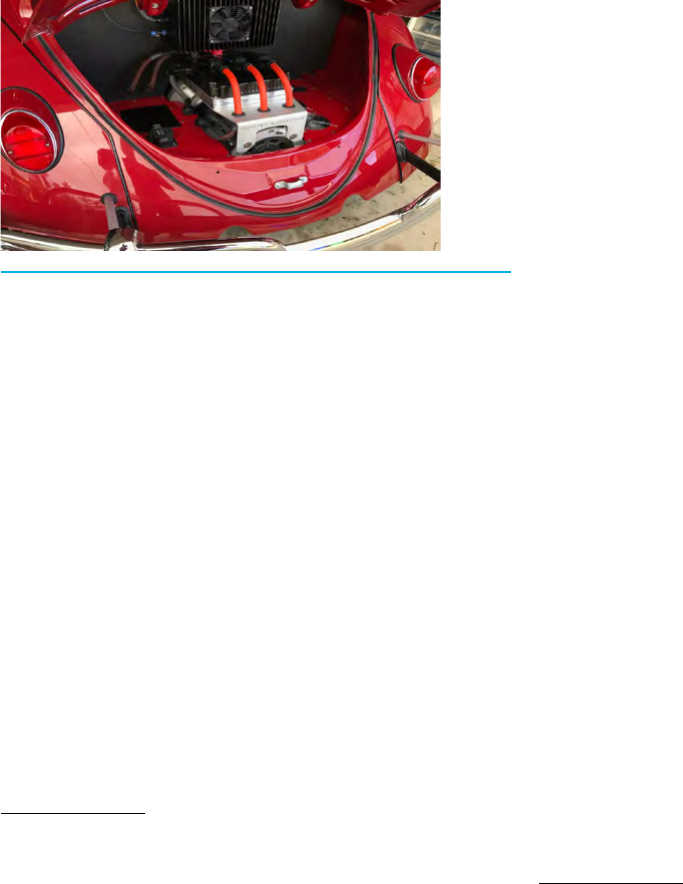
Electric Vehicle Retrotting: A Guide to Policy-Making
32
transportation system and enhancing public perception of
EVs to greener and cleaner alternatives.
128
Figure 7: Zelectric, a conversion of `50s and ‘60s Beetles and
Porsches
129
5.3. INDIA
EV retrotting services are available across India, with
different companies working in the retail of retrotting kits
and in the technical procedure for the conversion itself.
Most of the current market players are scattered, composed
mainly of a diverse start-up collective that does not operate
with state- or federal-level boosts.
130
The maturity of
the EV conversion market can increase with the further
development of policies and regulations, which can also
benet from a consumer environment that seeks new, clean
alternatives for variousvehicle types.
131
The Indian national government promulgated amendments
to the AIS 123 regulation, with Amendment N. 3 providing
the guidelines for pure electric conversion kits.
132
The
guidelines establish the technical, mechanical, and
safety tests and procedures that retrotted vehicles
must undergo
133
—excluding environmental tests to
reduce costs.
134
Additionally, the guidelines clarify that
EV conversion kits must be submitted for approval and
128 David Tracy, “California may soon pay you to convert your car to
an EV and I hope the federal government follows suit,” The Autopian, last
modied May 5, 2022, https://www.theautopian.com/california-may-soon-
pay-you-to-convert-your-car-to-electric-power-and-i-hope-the-federal-
government-follows-suit/.
129 Roy Furchgott, “A trip to the garage, for an electric switch,” The
New York Times, last modied April 23, 2020, https://www.nytimes.
com/2020/04/23/business/electric-car-conversions.html.
130 Avishek Banerjee, “EV powertrain retrotment market gains
traction with inux of organised players,” Money Control, last modied
July 30, 2022, https://www.moneycontrol.com/news/technology/auto/ev-
powertrain-retrotment-market-gains-traction-with-inux-of-organised-
players-8899181.html.
131 Banerjee, “EV powertrain retrotment market.”
132 Indian Government, AIS-123 Amendment 2, 2018.
133 Indian Government, AIS-123.
134 EV Reporter, “Regulatory framework for retrotting in India –
compiled by ARAI,” last modied February 28, 2022, https://evreporter.
com/regulatory-framework-for-retrotting-in-india/.
validation by the manufacturers, with certication issued
after approval.
135
Once certied, the manufacturers are
allowed to appoint dealers to sell the kits, and retrot
vehicles must later be reregistered in their region transport
ofces (RTOs) as EVs.
136
Delhi, in particular, presents a prominent market for EV
retrotting, with the city already accounting for over
six times the number of EVs compared to the rest of the
country.
137
With a National Green Tribunal 2015 ruling that
bans diesel vehicles older than 10 years from city roads, EV-
converted vehicles have recently been allowed to bypass the
decision.
138
With concomitant investments in public charging
infrastructure, EV conversion is now ofcially recognized as
a cost-effective and increasingly popular alternative.
An important factor of the Indian retrotting market is
its inclusivity of other types of vehicles, especially three-
wheelers. There is an increasing number of start-ups
focused on the conversion of three-wheelers that have
already received certication, with a big share of the
country’s market being destined to these vehicles.
139
Additionally, some states have already recognized the
potential of three-wheeler conversion and are promoting
incentives to democratize the practice. The state
government of Karnataka, for example, encourages the
conversion of existing ICE rickshaws in the city of Bengaluru
for its 2030 decarbonization goals, while the state of
Telangana includes subsidies of 15% of up to INR 15,000 for
the rst 3,000 retrotted general three-wheelers.
140
In India, EV retrotting has found fertile ground—with a
growing demand for decarbonization and cost-effective
solutions. The regularization of start-ups already present in
the market will allow for further expansion of the customer
base, with incentives (e.g., the bypassing of diesel bans in
Delhi) working in favor of the popularization of the practice.
An interesting factor, however, is the adaptation of EV
retrotting to the local demand of three-wheeler users—
an opportunity recognized by Karnataka and Telangana.
Further policies must be developed to both organize the
current market and promote EV retrotting for different
135 Indian Government, AIS-123 Amendment 2, 2018.
136 EV Reporter, “Regulatory framework for retrotting in India.”
137 Sunainaa Chadha, “Why Delhi is on track to emerging as the EV
capital of India,” The Times of India, last modied December 15, 2021,
https://timesondia.indiatimes.com/business/india-business/why-delhi-is-
on-track-to-emerging-as-the-ev-capital-of-india/articleshow/88298208.
cms.
138 Chadha, “Why Delhi is on track.”
139 EV Reporter, “FAQs about retrotment of electric 3Ws – answered
by Avinash Reddy,” last modied May 19, 2021, https://evreporter.com/
faqs-about-retrotment-of-electric-3ws/.
140 EV Reporter, “FAQs about retrotment of electric 3Ws.”
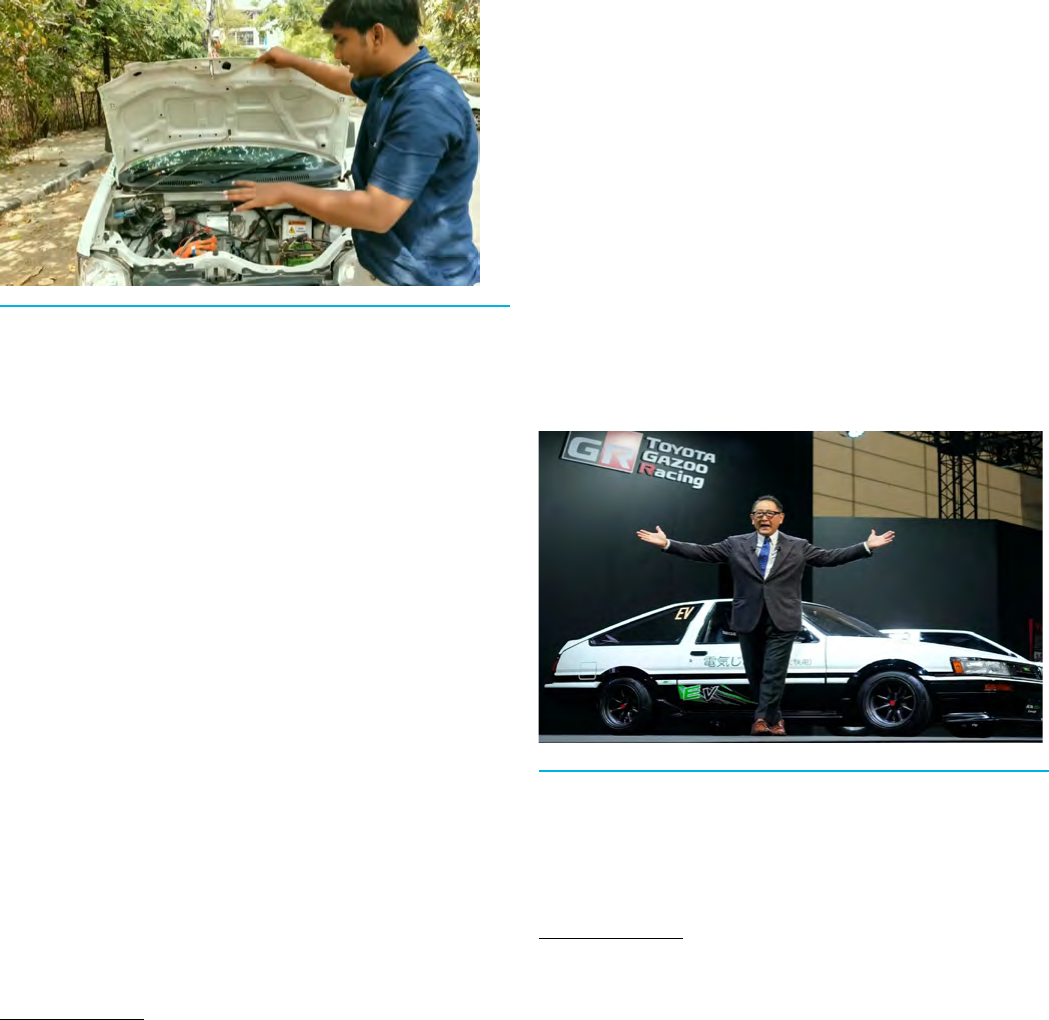
Electric Vehicle Retrotting: A Guide to Policy-Making
33
vehicle types as a safe, cost-effective, and efcient
alternative.
Figure 8: Conversion of an old car to electric in India
141
5.4. JAPAN
Despite the historical relevance the country has had in the
passenger vehicle market, Japan has seen a slow growth
in EV adoption throughout the years.
142
Some automobile
giants, such as Nissan and Toyota, already have experience
developing and producing low-emission vehicles in the
global market, such as the Nissan Leaf and Toyota’s hybrid
model Prius. However, with EVs accounting for less than
2% of new vehicle sales in the domestic market by the end
of 2022, drivers face a challenging low amount of public
charging infrastructure that compromise further public
acceptance for EV models.
143
However, Japan’s potential inuence in the global
automobile transition is not lost, and the country seems
to have changed its strategy to enable the expansion of
carbon-free transportation. The Japanese government has
announced its pledge for carbon neutrality by 2050 and a
ban on sales of domestic ICE vehicles by the mid-2030s.
144
As companies expect the government to announce further
policies to facilitate the electrication of road vehicles, they
are disclosing new EV plans. Japanese OEMs have recently
announced EV strategies that match the commitments
of other foreign giants and infrastructure investments to
enable a conducive environment for the transition.
145
Such a commitment came from Japanese giant Toyota,
141 Akshat Ajeya, “Why scrap your old car? Convert it to electric, here’s
how!” Go Mechanic Blog, last modied January 4, 2020, https://gomechanic.
in/blog/convert-your-old-car-to-electric/.
142 Ko Fujioka, “Japan to relax rules on fast EV chargers, jump-starting
rollout,” Nikkei Asia, last modied January 4, 2023, https://asia.nikkei.com/
Business/Automobiles/Japan-to-relax-rules-on-fast-EV-chargers-jump-
starting-rollout.
143 Fujioka, “Japan to relax rules on fast EV chargers.”
144 Shiho Takewaza, “Tesla escapes niche position as Japan starts to
embrace EVs,” The Japan Times, last modied February 7, 2022, https://
www.japantimes.co.jp/news/2022/02/07/business/corporate-business/
tesla-future-japan/.
145 Takewaza, “Tesla escapes niche position.”
with an investment announcement of USD 70 billion in the
electrication of its vehicles and the production of batteries
by 2030.
146
However, instead of focusing on the production
of new EV models, Toyota has chosen to focus on developing
EV conversion for their old ICE vehicles. Akio Toyoda, the
company’s chief executive, argues that retrotting would
give customers a wider variety of choices and allow some
markets that are not yet adapted for EVs to gradually
transition into electrication.
147
Toyota seeks to provide alternatives to new EV models
in the market, basing their EV strategy on the creation of
retrotting solutions. The company’s “conversion” strategy
was announced in January 2023 with the exhibition of both
a battery electric vehicle and a hydrogen-powered version of
the Toyota AE86 series to display the variety of possibilities
they are willing to develop.
148
Despite being at an initial
stage, Toyota’s push into the EV retrotting market has the
potential of igniting similar responses from other automobile
giants in the years ahead.
Figure 9: Toyota CEO Akio Toyoda at the Tokyo Auto Salon
149
5.5. KENYA
EV retrotting gained a special focus in Kenya as a viable
solution to introduce electrication in the country’s
transportation system. The Kenyan government pledged to
146 Paul Myles, “Toyota joins retrot EV powertrain push,” Automotive,
last modied January 16, 2023, https://www.tu-auto.com/toyota-joins-
retrot-ev-powertrain-push/.
147 Bethany Biron, “Toyota says it plans to transform older cars into
eco-friendly models to reduce carbon emissions, as the carmaker faces
increased criticism for EV hesitancy,” Business Insider India, last modied
January 16, 2023, https://www.businessinsider.in/thelife/news/toyota-
says-it-plans-to-transform-older-cars-into-eco-friendly-models-to-
reduce-carbon-emissions-as-the-carmaker-faces-increased-criticism-for-
ev-hesitancy/articleshow/97012468.cms.
148 Taylor, “Toyota says it plans to convert old cars into EVs.”
149 Biron, “Toyota says it plans to transform older cars.”

Electric Vehicle Retrotting: A Guide to Policy-Making
34
fully transition to ZEVs during the COP26
150
but accounted
with only 350 registered EVs by the end of 2022
151
.
Intending to explore the opportunities that arise from the
country’s mainly renewable energy matrix – with over
90% of Kenya’s power coming from sources such as solar,
wind, and thermal
152
–, the Kenyan government is slowly
introducing EV-friendly regulations to boost the market and
attract domestic and foreign investments in the sector
153
.
One of the main companies of the sector is Roam Electric
(former Opibus). Founded in 2017, Roam rst introduced
their EV solutions in Kenya to ll an identied gap in
the domestic market by providing EV conversion to 4x4
vehicles
154
. Targeting the safari and tourism industries, Roam
was able to grow its client-base by focusing on vehicles with
specic routes, predictable range capacity, and without
other cheap electrication alternatives in the domestic
market
155
. A kickstart through 4x4 EV conversion allowed
Roam to expand their portfolio to include domestically
produced electric two-wheelers and to invest in EV
conversion solutions to public transportation
156
.
Roam’s focus on four-wheeler EV conversion is particularly
interesting to the Kenyan market. Despite its renewable-
focused energy sources, urban centers such as Nairobi
present high levels of air pollution due to GHG and air
pollutants (AP) emissions by transportation
157
. This is
partially due to a combination of high rates of importation
of second-hand vehicles – with over 95% its light-duty eet
150 Nyabira, Muigai, Onyango, “Why Kenya could be getting ahead of
itself in electric vehicle drive”. Last modied June 20, 2023, https://www.
businessdailyafrica.com/bd/opinion-analysis/columnists/why-kenya-could-
be-getting-ahead-in-electric-vehicles-drive--4167214
151 ESI Africa, “Kenya making great strides to become Africa’s electric
vehicle hub”. Last modied June 14, 2023, https://www.esi-africa.com/east-
africa/kenya-making-great-strides-to-become-africas-electric-vehicle-hub/
152 ESI Africa, “Kenya making great strides to become Africa’s electric
vehicle hub”. Last modied June 14, 2023, https://www.esi-africa.com/east-
africa/kenya-making-great-strides-to-become-africas-electric-vehicle-hub/.
153 ESI Africa, “Kenya making great strides to become Africa’s electric
vehicle hub”. Last modied June 14, 2023, https://www.esi-africa.com/east-
africa/kenya-making-great-strides-to-become-africas-electric-vehicle-hub/.
154 Page, “Opibus: The mobility startup converting Kenya to electric
vehicles”. Altered June 14, 2023, https://edition.cnn.com/2022/03/01/
africa/opibus-kenya-electric-mobility-bus-motorcycle-car-spc-intl/index.
html
155 Kuhudzai, “Opibus scaling electric vehicle conversions for mass
transit vehicles to make electric mobility more accessible in Africa”. Last
modied June 14, 2023, https://cleantechnica.com/2021/03/01/opibus-
scaling-electric-vehicle-conversions-for-mass-transit-vehicles-to-make-
electric-mobility-more-accessible-in-africa/
156 Kuhudzai, “Opibus scaling electric vehicle conversions for mass
transit vehicles to make electric mobility more accessible in Africa”. Last
modied June 14, 2023, https://cleantechnica.com/2021/03/01/opibus-
scaling-electric-vehicle-conversions-for-mass-transit-vehicles-to-make-
electric-mobility-more-accessible-in-africa
157 Kirago, Gatari, Gustafsson, Andersson, “Black carbon emissions from
trafc contribute substantially to air pollution in Nairobi, Kenya”
coming from this origin
158
- and lack of air quality or emission
standards
159
. Stricter standards are necessary on vehicle
importations and GHG and AP emissions, but the available
second-hand vehicles already in circulation in Kenya possess
the ideal conditions for EV conversion
160
.
Roam’s market strategy for EV conversion not only utilizes
the already-existing second-hand four-wheeler eet and
the safari and tourism sectors but also emphasizes using
most of the retrotting components from local sources
161
.
The company reports incorporating at least 35% of the
components necessary for the conversion from local
sources and productions and envisions battery production
in-country to lower the retrotting prices further
162
. This
measure contributes to the development of a domestic value
chainthat supports future EV initiatives in Kenya.
After Roam’s inception in the market, other companies have
arisen and are expanding EV conversion as a viable solution
for ICE vehicles in the country. Kenya’s sole power supplier,
Kenya Power, for example, has announced plans to convert
over 2,000 vehicles from ICE to EV in the next four years
163
.
Other companies, such as Knights Energy, have received
approval from the Kenya Bureau of Standards (Kebs) to
convert vans and buses into hybrid and electric vehicles in
the country
164
. Despite existing challenges
165
, domestic and
international factors are highly favorable to the expansion
of the Kenyan EV retrotting market to Africa. Public and
private stakeholders are addressing the barriers through
158 UNEP, “Used vehicles and the environment: A global overview of
used LDVs”.
159 UNEP, “Used vehicles and the environment: A global overview of
used LDVs”.
160 Roam Electric, “About”. Last modied June 14, 2023. https://www.
roam-electric.com/about
161 Kuhudzai, “Opibus scaling electric vehicle conversions for mass
transit vehicles to make electric mobility more accessible in Africa”. Last
modied June 14, 2023, https://cleantechnica.com/2021/03/01/opibus-
scaling-electric-vehicle-conversions-for-mass-transit-vehicles-to-make-
electric-mobility-more-accessible-in-africa
162 Kuhudzai, “Opibus scaling electric vehicle conversions for mass
transit vehicles to make electric mobility more accessible in Africa”. Last
modied June 14, 2023, https://cleantechnica.com/2021/03/01/opibus-
scaling-electric-vehicle-conversions-for-mass-transit-vehicles-to-make-
electric-mobility-more-accessible-in-africa
163 ESI Africa, “Kenya making great strides to become Africa’s electric
vehicle hub”. Last modied June 14, 2023, https://www.esi-africa.com/east-
africa/kenya-making-great-strides-to-become-africas-electric-vehicle-hub/.
164 Kariuki, “Kebs licenses electric vehicles conversion companies”.
Last modied June 14, 2023, https://www.businessdailyafrica.com/
bd/markets/market-news/kebs-licenses-electric-vehicles-conversion-
companies--2459954
165 Page, “Opibus: The mobility startup converting Kenya to electric
vehicles”. Altered June 14, 2023, https://edition.cnn.com/2022/03/01/
africa/opibus-kenya-electric-mobility-bus-motorcycle-car-spc-intl/index.
html, ESI Africa, “Kenya making great strides to become Africa’s electric
vehicle hub”. Last modied June 14, 2023, https://www.esi-africa.com/east-
africa/kenya-making-great-strides-to-become-africas-electric-vehicle-hub/

Electric Vehicle Retrotting: A Guide to Policy-Making
35
policy and market instruments to ensure the continued
success of this venture.
Figure 10: Last installations of electric conversion system at
Roam Electric
166
5.6. SRI LANKA
The electrication of Sri Lanka’s transportation system
is strategic for the country’s economy and environment.
Heavily reliant on oil importations, Sri Lankan transportation
is estimated to be the most polluting sector in the country
167
,
using around 70% of Sri Lanka’s total oil consumption
168
.
This trend reects an acute increase of two- and three-
wheelers’ registrations in the country for the past two
decades
169
. These modes of transportation are often highly
polluting due to either outdated or poorly maintained
combustion systems
170
.
In addition to the related environmental constraints it
presents, oil importations generate a considerable constraint
to Sri Lanka’s economy
171
. Despite petroleum being the main
its energy source, the country is not a producer of fossil
fuel resources
172
. Sri Lanka’s energy systems are heavily
dependent on imported oil, with demand coming especially
from its transportation sector. The increased demand for
166 Roam Electric, “6 Benets of converting your vehicle to electric”. Last
modied June 20, 2023, https://www.roam-electric.com/post/6-benets-
of-converting-your-vehicle-to-electric
167 US Embassy Colombo, “U.S. partners with David Pieris Motor
Company to boost electric mobility in Sri Lanka”. Last modified June 26,
2023, https://lk.usembassy.gov/u-s-partners-with-david-pieris-motor-
company-to-boost-electric-mobility-in-sri-lanka/
168 Sugathapala, “Assessment of skills and knowledge gap in energy
efciency within the transport sector in Sri Lanka”
169 Sugathapala, “Assessment of skills and knowledge gap in energy
efciency within the transport sector in Sri Lanka”
170 SL Mobility, “Vision & Mission”. Last modied June 26, 2023, https://
www.slmobility.com/about/vision-&-mission
171 Sugathapala, “Assessment of skills and knowledge gap in energy
efciency within the transport sector in Sri Lanka”
172 Sugathapala, “Assessment of skills and knowledge gap in energy
efciency within the transport sector in Sri Lanka”
gasoline and diesel is one of the major factors that negatively
affect Sri Lanka’s economy
173
, as the government directs
many of its import bills on the acquirement of petroleum-
derived products
174
.
High oil-importation demands devalued the Sri Lankan
currency and led to a petroleum supply crisis in 2022,
resulting in the banishment of vehicle imports to the
country
175
. The economic crisis particularly impacted three-
wheeler’s owners and drivers. Tuk-tuks, as three-wheelers
are commonly known in Sri Lanka, are mainly used in urban
centers for self-employment, contributing to the informal
economy and transportation of the Sri Lankan population
176
.
Without the means of refueling their vehicles and of
importing new versions, half a million people have reportedly
lost their income activity during 2022, exacerbating the
country’s dependency on oil importation
177
.
Within this context, EV conversion has gained popularity
as a viable mobility opportunity in Sri Lanka. The solution
provides the opportunity for the government to achieve its
NDC targets and goals
178
, contributing to GHG mitigation
and air quality levels. Electrication of three-wheelers has
particularly caught attention of domestic and international
stakeholders. Coming behind motorcycles as the most
popular registered vehicles in the country
179
, tuk-tuks’
expansion rate amongst user has increased over 12-fold
in the last decade
180
. As most tuk-tuks in Sri Lanka are ICE
models imported from India
181
, start-ups and small-scale
mechanics have started exploring EV retrotting in the past
decade, developing simple and affordable conversion kits to
attract potential consumers
182
.
With the recent economic crisis and with the oil and
ICE vehicles importations’ ban
183
, tuk-tuk conversion
173 Top Car News, “Sri Lanka to electrify 500,000 tuk-tuks”. Last
modied June 26, 2023, https://topcarnews.net/sri-lanka-to-electrify-
500000-tuk-tuks-s244513.html
174 Sugathapala, “Assessment of skills and knowledge gap in energy
efciency within the transport sector in Sri Lanka”
175 Top Car News, “Sri Lanka to electrify 500,000 tuk-tuks”. Last
modied June 26, 2023, https://topcarnews.net/sri-lanka-to-electrify-
500000-tuk-tuks-s244513.html
176 SL Mobility, “Vision & Mission”. Last modied June 26, 2023, https://
www.slmobility.com/about/vision-&-mission
177 Top Car News, “Sri Lanka to electrify 500,000 tuk-tuks”. Last
modied June 26, 2023, https://topcarnews.net/sri-lanka-to-electrify-
500000-tuk-tuks-s244513.html
178 Sugathapala, “Assessment of skills and knowledge gap in energy
efciency within the transport sector in Sri Lanka”
179 Sugathapala, “Assessment of skills and knowledge gap in energy
efciency within the transport sector in Sri Lanka”
180 SL Mobility, “Vision & Mission”. Last modied June 26, 2023, https://
www.slmobility.com/about/vision-&-mission
181 UNEP, “Taming the sputtering tuk tuk: Sri Lankan innovator develops
affordable electric conversion kit”. Last modied June 26, 2023, https://
www.unep.org/pt-br/node/24335
182 UNEP, “Taming the sputtering tuk tuk: Sri Lankan innovator develops
affordable electric conversion kit”. Last modied June 26, 2023, https://
www.unep.org/pt-br/node/24335
183 Sugathapala, “Assessment of skills and knowledge gap in energy
efciency within the transport sector in Sri Lanka”
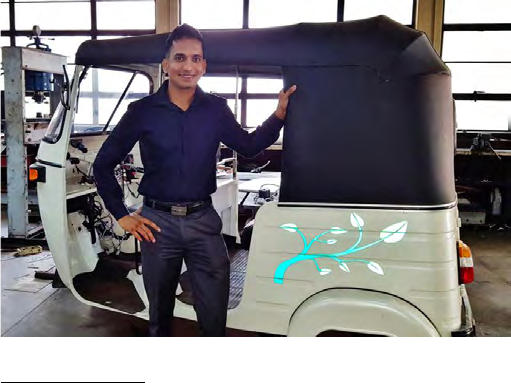
Electric Vehicle Retrotting: A Guide to Policy-Making
36
gained a larger interest from the Sri Lankan government.
Partnerships and technical exchanges with foreign
donors have recently been established to assist in tuk-tuk
conversion
184
and on the establishment of more advanced
charging facilities for the new EVs in the streets
185
.
Recognizing the strategic opportunities of tuk-tuk
conversion, the Sri Lankan government aims to facilitate
the conversion of half a million vehicles in the next ve
years, hoping to mitigate air pollution in urban centers and
to revive micro- and informal economic activities in the
country
186
.
Challenges remain on the road for electrication of the Sri Lankan
transportation eet. Mainly, charging infrastructures in the country
continue to present a challenge to current EV owners
187
, and
energy systems must be decarbonized to support EV expansion
188
.
However, the recognition of the strategic role tuk-tuks have in the
country’s economy and transportation is a key factor for future
environmentally friendly ventures
189
, and further investments in
technical know-how are essential for driving domestically led EV
conversion efforts in the country.
Figure 11: CEO of SL Mobility posing next to converted
three-wheeler
190
184 Hamza, “Sri Lanka partners with USAID to convert petrol-run
tuktuks to electricity”. Last modied June 26, 2023, https://economynext.
com/sri-lanka-partners-with-usaid-to-convert-petrol-run-tuktuks-to-
electricity-98704/
185 US Embassy Colombo, “U.S. partners with David Pieris Motor
Company to boost electric mobility in Sri Lanka”. Last modied June 26,
2023, https://lk.usembassy.gov/u-s-partners-with-david-pieris-motor-
company-to-boost-electric-mobility-in-sri-lanka/
186 Top Car News, “Sri Lanka to electrify 500,000 tuk-tuks”. Last
modied June 26, 2023, https://topcarnews.net/sri-lanka-to-electrify-
500000-tuk-tuks-s244513.html
187 Sugathapala, “Assessment of skills and knowledge gap in energy
efciency within the transport sector in Sri Lanka”
188 Sugathapala, “Assessment of skills and knowledge gap in energy
efciency within the transport sector in Sri Lanka”
189 UNEP, “Taming the sputtering tuk tuk: Sri Lankan innovator develops
affordable electric conversion kit”. Last modied June 26, 2023, https://
www.unep.org/pt-br/node/24335
190 UNEP, “Taming the sputtering tuk tuk: Sri Lankan innovator develops
affordable electric conversion kit”. Last modied June 26, 2023, https://
www.unep.org/pt-br/node/24335
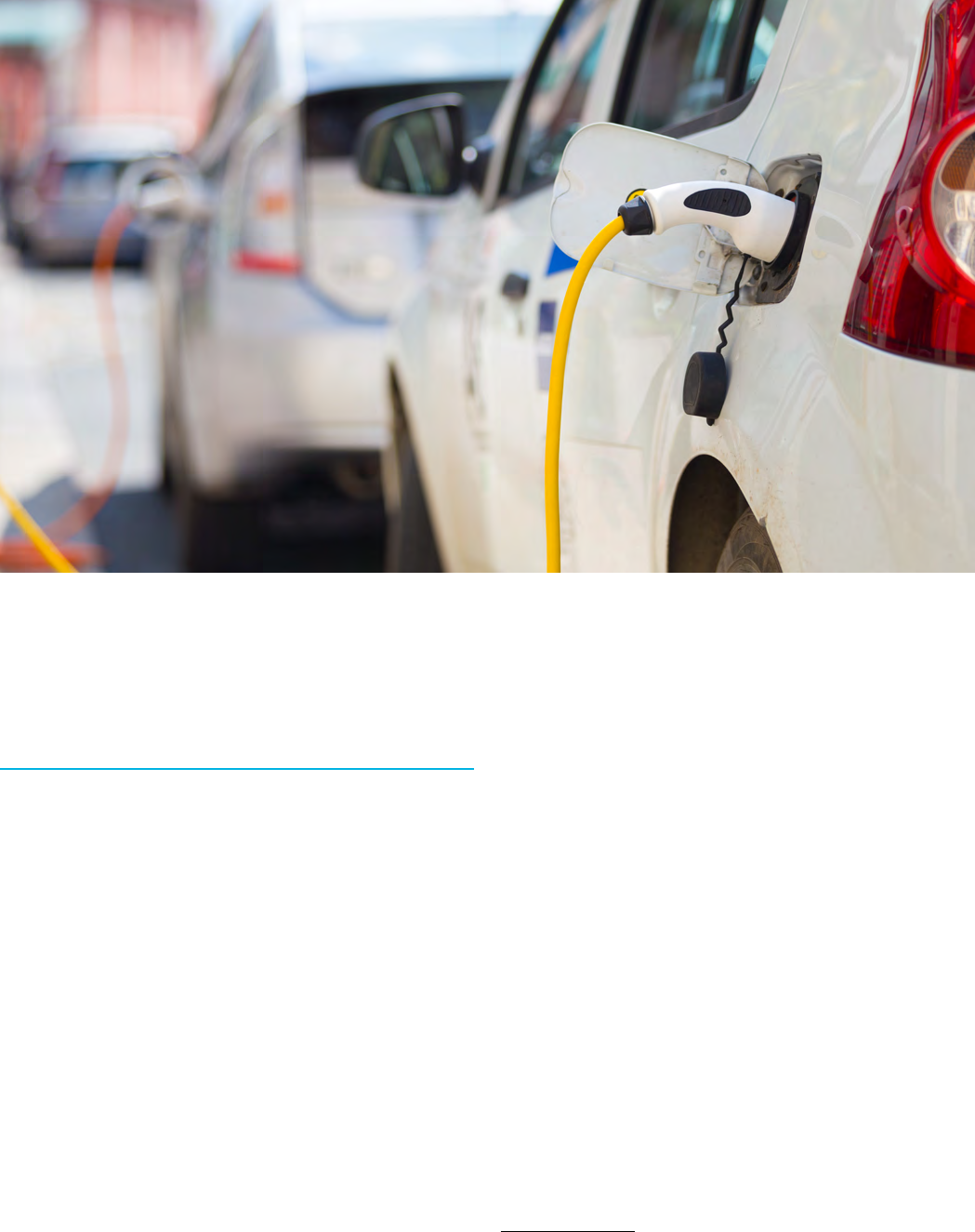
Electric Vehicle Retrotting: A Guide to Policy-Making
37
6.1. CONCLUSION
With many countries taking active measures to transition
their transportation systems from ICEs to electric
vehicles, the inclusion of EV retrotting within their
strategies creates the possibility of further accessibility
of transportation electrication to the population. The
simplicity of the technology, the opportunities made
available through decarbonization efforts within the EV
agenda, and the positive initial experiences presented by
some countries highlight the potential expansion of EV
retrotting technology. While the EV market is still in its
initial stages, it can grow signicantly when integrated into
national strategies.
Many countries have employed different policy measures
to accelerate the adoption of EVs by the population
but do not explicitly include retrotted vehicles in their
strategies. As an emerging global industry still in its initial
phase, EV retrotting requires technical regulations and
safety guidelines for its growth and popularization among
customers. Developing appropriate legislation for regulating
the process is not only important for the expansion of
6
6. CONCLUSION AND
RECOMMENDATIONS
the market but also for guaranteeing its safe practice.
Another area that requires specic policy involvement is
the continuous development of available models of the
retrotting kits through further R&D engagements.
191
Similarly, the EV retrotting market must also be included
in indirect strategies for transportation electrication
promotion. Misconceptions about the technology and
the retrotting process are common amongst potential
customers, who lack reliable information about the
retrotting kits and services available in the market
192
.
Investments in awareness campaigns and branding are
important for wider customer popularity.
While these policies are important for immediate EV
retrotting promotion strategies, they must be employed
with a broader and long-term strategy of charging
infrastructure promotion. The potential of EV retrotting
within a wider electrication agenda can promote a more
inclusive and exible transformation of the transportation
191 Transparency Market Research. “Automotive retrot electric
vehicle.”
192 Transparency Market Research. “Automotive retrot electric
vehicle.”

Electric Vehicle Retrotting: A Guide to Policy-Making
38
sector, reducing the cost barriers and contributing to
decarbonization efforts. Inclusive electrication policies of
different populational needs and leverage transportation
alternatives to customers of new and retrotted EVs are
crucial to promote true inclusion of the population within
electrication strategies.
6.2. RECOMMENDATIONS
The EV retrotting market can be directly beneted by
the promotion of decarbonization strategies and industry
innovations and can be further expanded by the adoption
of effective policies for the regulation and promotion
of the practice. With the potential of being a cheaper,
faster, and more adaptable alternative to purchasing new
EVs, retrotting is slowly being adopted by countries
as a complementary process to the electrication of
transportation systems. Given this circumstance, this
report proposes the following recommendations:
RECOMMENDATION 1: Establishment of EV conversion–
specic technical legislation
With the growth of EV retrotting kits available to the
public, countries must prioritize specic legislation to
regulate and oversee the EV retrotting process. While
general guidelines for vehicular modications exist, the
process for EV retrotting directly affects the weight,
balancing, braking, suspension, and power generation of
vehicles. The adoption of an updated and robust regulation
scheme ensures the process’s reliability to the customer,
constituting an important rst step for the expansion of the
market.
Technical guidelines must be the comprehensive conversion
procedure, which include the safety requirements,
environmental regulations, and registration and insurance
certications. Additionally, the guidelines must be clear
on the homologation requirements of EV retrotting
kits, certication of qualied manufacturers, and
accreditation of specialized sellers and technicians for
installment. To accelerate the adoption of EV retrotting
as a complementary option for the electrication of
transportation, EV conversion must be comprehensively
and explicitly included in the country’s vehicular legislator
system, enabling its monitoring and regulation.
RECOMMENDATION 2: Inclusion of EV retrots in
existing EV incentives
As countries strive to transition their transportation
systems towards decarbonization, electrication is a
popular alternative for many. While it may be argued that
EV retrots can be automatically classied as EVs and,
consequently, be given the same incentives granted to new
EVs, an explicit inclusion of converted vehicles is essential
for a truthful adoption of retrotting as an electrication
strategy.
Direct incentives for EV retrotting may facilitate awareness
and the initial popularization of the practice, allowing
customers to become familiarized with the practice and to
invest in an alternative to new EV acquisition—which might
not be nancially accessible to many. Additionally, permitting
converted vehicles to bypass carbon-zero or ICE-banned
zones can potentially democratize vehicle electrication and,
consequently, promote further awareness and acceptance of
the practice.
RECOMMENDATION 3: Investment in R&D, capacity-
building, and awareness campaigns
The EV market is still in its initial stages worldwide, and the
EV conversion market is no exception. Despite being an
affordable alternative to new EV acquisition, EV retrotting
faces the challenge of being model-specic, requiring
the development of a particular EV conversion kit for
each vehicle model. Thus, investments are necessary for
manufacturers, start-ups, and companies to continue to
develop new EV conversion kits, focusing on popular models
that have a wider range of customers.
Similar investments must be directed to the technicians
who perform the conversion. Given the safety risks that
exist in any vehicle modication, continuous capacity-
building is necessary to keep up with the fast-transforming
market. Additionally, awareness campaigns are necessary to
familiarize customers with the technology available for their
vehicles and the potential incentives and benets that are
connected to EV retrotting.
Electric Vehicle Retrotting: A Guide to Policy-Making
39
REFERENCES
Afraah, Yuniaristanto, Sutopo, Hisjam. “Comparing total cost
of ownership of electric and conventional motorcycles in
Indonesia”. Jurnal Teknik Industri (2021):22(2). https://doi.
org/10.22219/JTIUMM.Vol22.No2.196-210
Agarwal, Babbar. “Consumer’s attitude towards retrotting
of existing internal combustion engine scooters with electric
conversion in India.” Journal of Commerce and Trade (2022):
17(1). doi.org/10.26703
Ajeya, Akshat. “Why scrap your old car? Convert it to
electric, here’s how!” Go Mechanic Blog. Last modied
January 4, 2020. https://gomechanic.in/blog/convert-your-
old-car-to-electric/.
Asian Development Bank, “Indonesia’s Summary Transport
Assessment”. Last modied July 04, 2023. https://www.
adb.org/sites/default/les/publication/217196/ino-
paper-15-2016.pdf
Asian Development Bank, “Indonesia: Transport sector
assessment, strategy, and road map.” Last modied July 04,
2023. https://www.adb.org/sites/default/les/institutional-
document/33652/les/ino-transport-assessment.pdf
Asociación Latinoamericana de Retrot. “Movilidad,
cambiar motores de combustión por eléctricos y como
reducir emisiones a un menor costo”. Last modied June
13, 2023. https://plataformaurbana.cepal.org/sites/
default/les/2022-04/Movilidad%2C%20cambiar%20
motores%20de%20combusti%C3%B3n%20por%20
el%C3%A9ctricos%20y%20c%C3%B3mo%20reducir%20
emisiones%20a%20un%20menor%20costo.pdf
Banerjee, Avishek. “EV powertrain retrotment market gains
traction with inux of organised players.” Money Control.
Last modied July 30, 2022. https://www.moneycontrol.
com/news/technology/auto/ev-powertrain-retrotment-
market-gains-traction-with-inux-of-organised-
players-8899181.html.
Berggreen. “What was I thinking? A tale of an EV conversion
that was over before it began”. Clean Technica
. Last modied
May 18, 2023. https://cleantechnica.com/2018/06/02/
what-was-i-thinking-a-tale-of-an-ev-conversion-that-was-
over-before-it-began/
Biron, Bethany. “Toyota says it plans to transform older
cars into eco-friendly models to reduce carbon emissions,
as the carmaker faces increased criticism for EV hesitancy.”
Business Insider India. Last modied January 16, 2023.
https://www.businessinsider.in/thelife/news/toyota-says-it-
plans-to-transform-older-cars-into-eco-friendly-models-to-
reduce-carbon-emissions-as-the-carmaker-faces-increased-
criticism-for-ev-hesitancy/articleshow/97012468.cms.
Central Bank of Sri Lanka. “Powering sustainable growth and
development”. (2019) Last modied July 04, 2023. https://
www.cbsl.gov.lk/sites/default/les/cbslweb_documents/
publications/annual_report/2019/en/13_Box_06.pdf
Chadha, Sunainaa. “Why Delhi is on track to emerging as
the EV capital of India.” The Times of India. Last modied
December 15, 2021. https://timesondia.indiatimes.com/
business/india-business/why-delhi-is-on-track-to-emerging-
as-the-ev-capital-of-india/articleshow/88298208.cms.
Climate Transparency. “Indonesia”. Last modied July 04,
2023. https://www.climate-transparency.org/wp-content/
uploads/2022/10/CT2022-Indonesia-Web.pdf
Doll, Scooter. “Electric vehicle tax credits and rebates
available in the US, sorted by state.” Electrek. Last modied
October 5, 2022. https://electrek.co/2022/10/05/ev-tax-
credit-rebate-states-electric-vehicles/.
Eisenstein, Paul A. “GM set to join fast-growing EV
conversion market.” The Detroit Bureau. Last modied July
22, 2022. https://www.thedetroitbureau.com/2022/07/gm-
set-to-join-fast-growing-ev-conversion-market/.
ESI Africa, “Kenya making great strides to become Africa’s
electric vehicle hub”. Last modied June 14, 2023, https://
www.esi-africa.com/east-africa/kenya-making-great-strides-
to-become-africas-electric-vehicle-hub/
Equipmake. “EVR-B5 Overview.” Accessed January 13,
2023. The DETROIT BUREAU.
Evarts, Eric C. “French company makes EV conversions easy
for old clunkers.” Green Car Reports. Last modied 2019.
https://www.greencarreports.com/news/1124381_french-
company-makes-ev-conversions-easy-for-old-clunkers.
EV Reporter. “E-2Wheeler retrotting: Scope and cost
of conversion.” Last modied February 16, 2022. https://
evreporter.com/e-2wheeler-retrotting-scope-and-cost-of-
conversion/.
EV Reporter. “FAQs about retrotment of electric 3Ws –
answered by Avinash Reddy.” Last modied May 19, 2021.
https://evreporter.com/faqs-about-retrotment-of-electric-
3ws/.
EV Reporter. “Regulatory framework for retrotting in
India – compiled by ARAI.” Last modied February 28,
2022. https://evreporter.com/regulatory-framework-for-
retrotting-in-india/.
Fearon, Robin. “Retrotting older cars with electric motors
could transform transport.” Discovery. Last modied
November 1, 2021. https://www.discovery.com/motor/
Electric Vehicle Retrotting: A Guide to Policy-Making
40
retrotting-older-cars-with-electric-motors-could-
transform-tra.
Fujioka, Ko. “Japan to relax rules on fast EV chargers, jump-
starting rollout.” Nikkei Asia. Last modied January 4, 2023.
https://asia.nikkei.com/Business/Automobiles/Japan-to-
relax-rules-on-fast-EV-chargers-jump-starting-rollout.
Furchgott, Roy. “A trip to the garage, for an electric switch.”
The New York Times. Last modied April 23, 2020. https://
www.nytimes.com/2020/04/23/business/electric-car-
conversions.html.
Gajanayake, Thilaskhan, Sugathapala, Bandara. “Study of
the impact of electric vehicles on fuel consumption and
carbon dioxide emission scenarios in Sri Lanka”. 2020
Moratuwa Engineering Research Conference (2020). 10.1109/
MERCon50084.2020.9185248
Giriyapur, Arun C., and D. M. Karthik. “Retrotting of
an engine powered vehicle into an electric vehicle.”
International Conference on Smart System and Inventive
Technology (ICSSIT) (2019). https://doi.org/10.1109/
ICSSIT46314.2019.8987868.
Goldstein Market Intelligence, “Sri Lanka three-wheeler
market trends, challenges, key players, demand & growth
drivers analysis with regional outlook for forecast period
2016-2024”. Last modied June 12, 2023. https://www.
goldsteinresearch.com/report/sri-lanka-three-wheeler-
market-analysis
Gomez, Eva. “Retrot electrique: a quand le deploiement
a grande echelle en France?” Roole. Last modied October
5, 2022. https://media.roole.fr/transition/voiture-propre/
retrot-electrique-a-quand-le-deploiement-a-grande-
echelle-en-france.
Gouvernement Française. La concertation sur le retrot
électricque est lancer. 2022.
Government of Kenya. “National climate change action
plan 2018-2022”. Last modied July 05, 2023. https://
napglobalnetwork.org/wp-content/uploads/2022/01/
napgn-en-2022-kenya-NCCAP-2018-2022-
Implemantation-Status-Report.pdf
Habibie, Sutopo, “A literature review: Commercialization
study of electric motorcycle conversion in Indonesia”.
IOP Conference Series: Materials Science and Engineering.
(2020):943. 10.1088/1757-899X/943/1/012048
Hardman, Chandan, Tal, Turrentine. “The effectiveness of
nancial purchase incentives for battery electric vehicles:
A review of the evidence” Renewable and Sustainable
Energy Reviews (2017): 80. https://doi.org/10.1016/j.
rser.2017.05.255
Hamza. “Sri Lanka partners with USAID to convert petrol-
run tuktuks to electricity.” Economy Next. Last modied May
18, 2023. https://economynext.com/sri-lanka-partners-with-
usaid-to-convert-petrol-run-tuktuks-to-electricity-98704/
Hayes, Daniel. The Clean Vehicle Retrot Technology Guide.
Zemo Partnership. 2021.
Helmers, Eckard, Johannes Dietz, and Susanne Hartard.
“Electric car life cycle assessment based on real-world
mileage and the electric conversion scenario.” The
International Journal of Life Cycle Assessment (2017): 22.
https://doi.org/10.1007/s11367-015-0934-3.
Hoeft, Fabian. “Internal combustion engine to electric
vehicle retrotting: Potential customer’s needs, public
perception and business model implications.” Transportation
Research Interdisciplinary Perspectives 9 (2021). https://doi.
org/10.1016/j.trip.2021.100330.
Hybrid Center. “12 Great Electric Car Conversion
Companies Reviewed.” Last modied May 13, 2021. https://
www.hybridcenter.org/electric-car-conversion-companies/.
Kandagal, Sandesh. “EV retrot technology? Conversion
kit, cost & companies.” e-Vehicle Info. Last modied April
1, 2022. https://e-vehicleinfo.com/ev-retrot-technology-
conversion-kit-cost-companies/.
Kariuki, “Kebs licenses electric vehicles conversion
companies”. Business Daily Africa. Last modied June 14,
2023, https://www.businessdailyafrica.com/bd/markets/
market-news/kebs-licenses-electric-vehicles-conversion-
companies--2459954
Kirago, Gatari, Gustafsson, Andersson, “Black carbon
emissions from trafc contribute substantially to air
pollution in Nairobi, Kenya”. Communications Earth &
Environment (2022):3. https://doi.org/10.1038/s43247-
022-00400-1
Kokate, Uttekar, Karandikar, Holmukhe. “Retrotting of
auto rickshaw to e-rickshaw: A feasibility study”. 2020 First
International Conference on Power, Control and Computing
Technologies (ICPC2T).
978-1-7281-4997-4/20/$31.00
Kuchta, David M. “Best EV conversion companies.”
Treehugger. Last modied December 12, 2022. https://
www.treehugger.com/electric-vehicle-ev-conversion-
companies-85249.
Kuhudzai, “Opibus scaling electric vehicle conversions
for mass transit vehicles to make electric mobility more
accessible in Africa”. Clean Technica. Last modied June
14, 2023, https://cleantechnica.com/2021/03/01/opibus-
scaling-electric-vehicle-conversions-for-mass-transit-
vehicles-to-make-electric-mobility-more-accessible-in-
africa/
Kukar, Gupta. “Retrotting for electric vehicles: Status,
Electric Vehicle Retrotting: A Guide to Policy-Making
41
potentials, and challenges.” The City Fix Learn. Last
modied July 29, 2019. https://thecityxlearn.org/
webinar/retrotting-electric-vehicles-status-potential-and-
challenges.
Kumar, Nirmal, Navaneeth M, and Allan Sabu Joseph.
“Retrotting of conventional two-wheelers to electric
two-wheelers.” 13th IEEE PES Asia Pacic Power & Energy
Engineering Conference (PPEEC) (2021). https://doi.
org/10.1109/APPEEC50844.2021.9687799.
Kurukulasuriya, “Sri Lanka’s energy crisis is a glimpse of
what’s coming”. UNDP. Last modied June 12, 2023. https://
www.undp.org/blog/sri-lankas-energy-crisis-glimpse-whats-
coming
Libeau. “Retrotting: A frugal, circular and inclusive solution
to decarbonize our vehicle eet.” The OECD Forum Network.
Last modied May 18, 2023. https://www.oecd-forum.org/
posts/retrotting-a-frugal-circular-and-inclusive-solution-
to-decarbonize-our-vehicle-eet
Luthereau, Alexandra. “Le retrot électrique: L’avenir de la
voiture propre?” Numerama. Last modied June 28, 2020.
https://www.numerama.com/tech/628645-le-retrot-
electrique-lavenir-de-la-voiture-propre.html.
Madhuwanthi, Marasinghe, Rajapakse, Dharmawansa,
Nomura. “Factors inuencing to travel behavior on transport
mode choice A case of Colombo Metropolitan Area in Sri
Lanka.” International Journal of Affective Engineering (2016):
15(2). https://doi.org/10.5057/ijae.IJAE-D-15-00044
Meixner. “Electric vehicle enthusiasts convert their own
petrol cars, but engineers warn of the risks of retrotting.
ABC News Australia. Last modied May 16, 2023. https://
www.abc.net.au/news/2018-07-24/make-your-own-
electric-car/9918964
MMA. “Tuning auto: Que dit la loi en France?” Last modied
October 29, 2020. https://www.mma.fr/zeroblabla/
tuning-auto-reglementation-france.html#:~:text=EST%20
PAS%20PERMIS-,La%20personnalisation%20d’un%20
v%C3%A9hicule%20est%20libre%20dans%20la%20
mesure,%C3%A0%20la%20l%C3%A9gislation%20en%20
vigueur.
Myles, Paul. “Toyota joins retrot EV powertrain push.”
Automotive. Last modied January 16, 2023. https://www.
tu-auto.com/toyota-joins-retrot-ev-powertrain-push/.
Nyabira, Muigai, Onyango, “Why Kenya could be getting
ahead of itself in electric vehicle drive”. Business Daily
Africa. Last modied June 20, 2023, https://www.
businessdailyafrica.com/bd/opinion-analysis/columnists/
why-kenya-could-be-getting-ahead-in-electric-vehicles-
drive--4167214
Openstates. “Vehicular air pollution: Zero-emission
aftermarket conversion project.” AB-2350. Last modied
2022. https://openstates.org/ca/bills/20212022/
AB2350/#:~:text=This%20bill%20would%20require%20
the,been%20converted%20into%20a%20zero%2D.
Page. “Opibus: The mobility startup converting Kenya to
electric vehicles”. CNN. Last modied June 06, 2023. https://
edition.cnn.com/2022/03/01/africa/opibus-kenya-electric-
mobility-bus-motorcycle-car-spc-intl/index.html
Precedence Research. “Automotive retrot electric vehicle
powertrain market.” Last modied September 2022. https://
www.precedenceresearch.com/automotive-retrot-electric-
vehicle-powertrain-market.
Randall, Chris. “Ford announces electric conversion motor.”
Electrive. Last modied August 27, 2021. https://www.
electrive.com/2021/08/27/ford-announces-electric-
conversion-motor/.
Republic of Kenya. “Electric vehicle standards in Kenya:
Draft summary report”. Last modied May 18, 2023. https://
www.transport.go.ke/department/images/climate/Electric_
mobility_standards.pdf
République Française. Arrêté du 13 mars 2020 relatif aux
conditions de transformation des véhicules à motorisation
thermique en motorisation électrique à batterie ou à pile à
combustible. 2020.
République Française. Le retrot électrique: Quel cadre legal?
Quelle prime à la conversion? 2022.
Roam Electric. “Off Road”, last modied June 06, 2023.
https://www.roam-electric.com/off-road
Roam Electric, “6 Benets of converting your vehicle to
electric”. Last modied June 20, 2023, https://www.roam-
electric.com/post/6-benets-of-converting-your-vehicle-to-
electric
Santiago. “La CDMX invertirá 20 mdp en conversión de
autos de combustión a eléctricos”. Expansión Política. Last
modied May 18, 2023. https://politica.expansion.mx/
cdmx/2022/02/03/cdmx-inversion-20-mdp-innovacion-
motores-electricos
Siele. “Electric conversion: How Kenyan motorists are
cutting costs.” Business Today. Last modied May 02, 2023.
https://businesstoday.co.ke/electric-conversion-how-
kenyan-motorists-are-cutting-costs/.
SL Mobility. “Conversion Kit”, last modied June 07, 2023.
https://www.slmobility.com/products/conversion-kit.
SL Mobility. “Conversion Kit.” Last modied June 27, 2016.
https://www.slmobility.com/products/conversion-kit/
conversion-kit/conversion-kit.
Electric Vehicle Retrotting: A Guide to Policy-Making
42
Subbru. “The cost of replacing a hybrid car battery in Kenya”.
Opera News. Last modied July 04, 2023. https://ke.opera.
news/ke/en/auto/f17a8c2cee84cd8b34bec2919e6611b4
Sugathapala, “Assessment of skills and knowledge gap in
energy efciency within the transport sector in Sri Lanka”.
UNEP. Last modied July 04, 2023. https://c2e2.unepccc.
org/wp-content/uploads/sites/3/2021/08/assessment-of-
skills-and-knowledge-gap-in-energy-efciency-within-the-
transport-sector-in-sri-lanka.pdf
Takewaza, Shiho. “Tesla escapes niche position as Japan
starts to embrace EVs.” The Japan Times. Last modied
February 7, 2022. https://www.japantimes.co.jp/
news/2022/02/07/business/corporate-business/tesla-
future-japan/.
Taylor, Thom. “Toyota says it plans to convert old cars into
EVs.” Motor Biscuit. Last modied January 13, 2023. https://
www.motorbiscuit.com/toyota-says-plans-to-convert-old-
cars-into-evs/.
Thilakshan, Sugathapala, Bandara. “Electric vehicles as a
sustainable mode of transportation: The Sri Lankan context”.
24
th
International Forestry and Environment Symposium
2019 (2019). Last modied July 05, 2023. https://www.
researchgate.net/publication/342533719_Electric_
Vehicles_as_a_Sustainable_Mode_of_Transportation_-_The_
Sri_Lankan_Context
TOLV. “Choisir la meilleure assurance pour son véhicule
après retrot.” Accessed January 20, 2023. https://tolv-
systems.com/choisir-assurance-auto-retrot/.
Top Car News, “Sri Lanka to electrify 500,000 tuk-tuks”. Last
modied June 26, 2023, https://topcarnews.net/sri-lanka-
to-electrify-500000-tuk-tuks-s244513.html
Tracy, David. “California may soon pay you to convert your
car to an EV and I hope the federal government follows
suit.” The Autopian. Last modied May 5, 2022. https://
www.theautopian.com/california-may-soon-pay-you-to-
convert-your-car-to-electric-power-and-i-hope-the-federal-
government-follows-suit/.
Trading Economics. “Indonesia interest rate”. Last modied
July 04, 2023. https://tradingeconomics.com/indonesia/
interest-rate
Transition One. Homepage. Accessed October 3, 2022.
https://transition-one.fr/.
Transparency Market Research. “Automotive retrot electric
vehicle powertrain market.” Last modied June 2022.
https://www.transparencymarketresearch.com/automotive-
retrot-electric-vehicle-powertrain-market.html.
UNEP. “Used vehicles and the environment: A
global overview of used light duty vehicles – ow,
scale and regulation.” https://wedocs.unep.org/
bitstream/handle/20.500.11822/34298/KFUVE.
pdf?sequence=1&isAllowed=y
UNEP. “Taming the sputtering tuk tuk: Sri Lankan innovator
develops affordable electric conversion kit”. Last modied
July 04, 2023. https://www.unep.org/news-and-stories/
story/taming-sputtering-tuk-tuk-sri-lankan-innovator-
develops-affordable-electric
UNFCCC. Key aspects of the Paris Agreement. Accessed
October 2, 2022. https://unfccc.int/most-requested/key-as-
pects-of-the-paris-agreement?gclid=CjwKCAjwrdmhBhB-
BEiwA4Hx5g4N4YHKwi1RaH_XUmZtdG7QdhuL8PgKRg-
c4Zzq0wtdtMJifxNxxjQxoCsIQQAvD_BwE.
U.S. Department of Energy. “Propane Laws and Incentives
in Federal.” Accessed January 12, 2023. https://afdc.energy.
gov/fuels/laws/LPG?state=US.
US Embassy Colombo, “U.S. partners with David Pieris Mo-
tor Company to boost electric mobility in Sri Lanka”. Last
modied June 26, 2023, https://lk.usembassy.gov/u-s-part-
ners-with-david-pieris-motor-company-to-boost-electric-
mobility-in-sri-lanka/
Wachira. “Kenya’s electric vehicle market is raring to go.”
China Dialogue. Last modied June 06, 2023. https://chinadi-
alogue.net/en/transport/kenyas-electric-vehicle-market-is-
raring-to-go/
Watts, Robbie, Aritra Ghosh, and Justin Hinshelwood. “Ex-
ploring the potential for electric retrot regulations and
an accreditation scheme in the UK.” Electronics 10, no. 24
(2021). https://doi.org/10.3390/electronics10243110.
Winton, Neil. “Electric cars are too expensive for many, but
retrotting could be the answer.” Forbes. Last modied
January 20, 2022. https://www.forbes.com/sites/neilwin-
ton/2022/01/20/electric-cars-are-too-expensive-for-many-
but-retrotting-could-be-the-answer/?sh=319bbc397583.
Zainol, Toha, Kamisan, Bukhari 2019. Design and develop-
ment of a retrot electric motorbike. International Journal of
Recent Technology and Engineering, 7.

Electric Vehicle Retrotting: A Guide to Policy-Making
43
APPENDIX: EV RETROFITTING
POLICIES BY GGGI MEMBER
A detailed look into each member’s EV retrotting policies divided between Technical Regulations, Incentive Measures,
and Environment Enabling Measures are as follows:
Technical Regulations
Australia
The National Guidelines for the Installation of Electric Drives in Motor Vehicles offers the general technical guidelines
for the conversion of ICEs into EVs. However, each jurisdiction must be consulted to certify that their procedures are
also being followed. Nationally, once the conversion is performed, a certied engineer must perform an assessment of
the vehicle to check if all safety systems are fully operational and that the brakes are working. A detailed report must
be submitted to the Department of Transport for review and approval, which will grant the vehicle authorization to be
registered as an EV.
Indonesia
2W conversion:
• Motorcycles that have been converted from ICE to electric must undergo inspection and approval from a spe-
cialized technician and receive the proper certication. The certication requires each vehicle to be tested and
approved by the specialized technician.
• After the certication is obtained, motorcycles must be registered as converted to the Transportation Ofcial.
Documents to be presented include the Vehicle Number Certication, the test report, a list of EV system instal-
lations, the Conversion Certicate, the technical drawings of the converted motorcycle, and any other require-
ments in accordance with the regulatory provisions legislation. After the procedure is completed, the applicant
must pay a registration fee.
Other motorized vehicles’ conversion:
• Conversions can only be performed by approved and registered technicians and certied mechanics. Every vehicle
must be individually tested and certied within the technical and road-worthy requirements. The responsible
technician and mechanics must directly apply for the certication and approval with the Indonesian National
Police. After application, every vehicle must be tested and receive approval.
• Converted vehicles are required to have periodic tests in addition to being proven by registration and identication.
Nepal
EV retrotting must receive verication from a responsible ofcer at the Transport Ofce.
Sri Lanka
Fuel conversion can be performed only after 3 years from the date of vehicle registration and before the vehicle is older
than 25 years of age. Prior approval for the conversion should be obtained from the Commissioner General of Motor
Trafc. A Vehicle Conversion approval must be requested, and, after the procedure, a Weight Certicate and a Fuel
Conversion of Vehicle Certicate must be obtained from the Department of Motor Trafc.

Electric Vehicle Retrotting: A Guide to Policy-Making
44
UK
Registration:
• Under the Vehicle Excise and Registration Services act 1994, a vehicle converted from a petrol engine to an elec-
tric one must be then registered as an electric car. This is done by taking down the V5C registration document
and substituting it with the EV documents. Generally, any vehicle must be registered with the DVLA, which might
follow an in-person inspection.
Insurance:
• The insurance company must be notied of the EV conversion. Vehicle owners must obtain an insurance certi-
cate from their insurance company after providing the necessary paperwork for the conversion process.
Safety Certication:
• A crash performance test might be done by the DVLA to certify that the vehicle’s weight did not suffer consider-
able alterations during the conversion procedure compared to the registered weight on its VIN plate
Incentive Measures
Indonesia
2W Conversion Subsidy:
• Electric motorbike conversion assistance for the 2023 scal year is set at a maximum of 50,000 units of electric
motorbikes and for the 2024 budget it is set at 150,000 electric motorbikes. The size of the number of convertible
electric motors can be evaluated every year.
Nepal
Registration Fee Exemption:
• Environment-friendly and energy-efcient modications (including retrotting ICE vehicles into electric) have been
granted exemption of the 50% rate of the registration fee upon approval from the responsible ofcer from the verica-
tion of the vehicle after said alteration.
UK
Tax Reductions:
• After being certied and accredited by the DVLA, EV converted cars less than 40 years old are eligible for EV tax re-
ductions.
Conversion Subsidies:
• The UK government have invested in several initiatives and public funds to support the conversion of government and
public eets to adapt to Clear Air Zones and mitigation targets. Funds include the Clean Bust Technology Fund, the
Clean Vehicle Technology Fund, the Clean Air Fund, and the Annual Air Quality Grant. While these incentives have
been signicant, they are not exclusive to EV conversion, and are mostly focused on converting old eets to t the
European Air Standards.
Environment Enabling Measures
Sri Lanka
International Cooperation:
• USAID + Pieris Motor Company 2022 MoU: Sri Lanka’s energy ministry has partnered with a local motor mechan-
ics company and USAID to convert three-wheelers run on petrol to electric three-wheelers. Under this partnership,
DPMC will convert internal combustion engine three-wheelers to electric three-wheelers and offer after sales ser-
vices through their island wide service centers. Meanwhile USAID will provide technical assistance to DPMC and es-
tablish a network of charging stations for three-wheelers.
Indonesia
R&D Investments:
• The Indonesian government has announced a deduction of up to 300 percent on research and development costs in
the elds of power generation, batteries, and power tools to promote lower prices of EV parts in the country

Electric Vehicle Retrotting: A Guide to Policy-Making
45
www.GGGI.org
Follow our acvies on Facebook, Twier, LinkedIn and YouTube.
The Global Green Growth Instute
19F Jeongdong Building, 21-15, Jeongdong-gil,
Jung-gu, Seoul, Korea 04518
